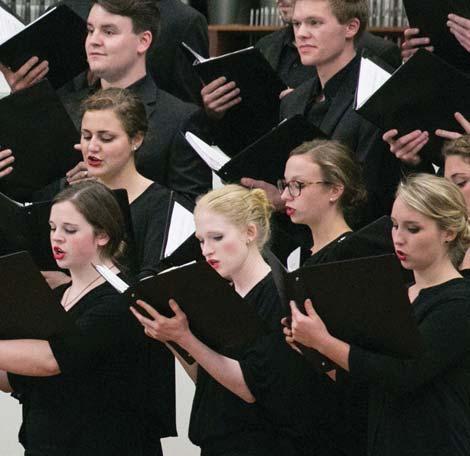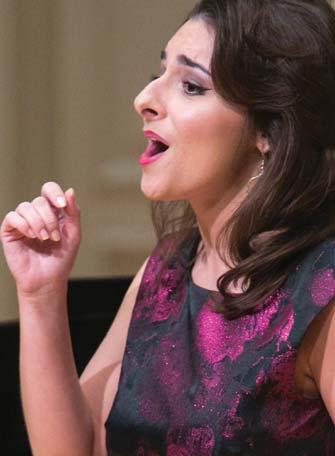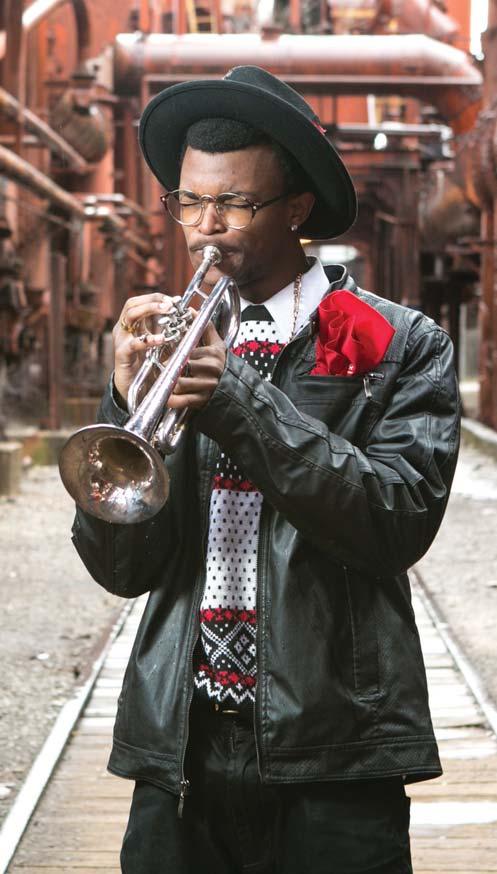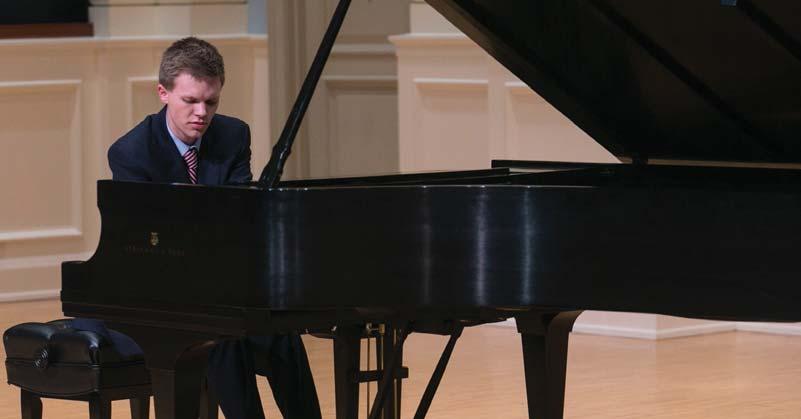ala breve













































































































7AMEA
82017
13Alabama
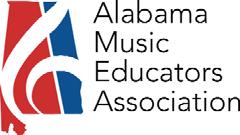
20AMEA
22FAME
31Choral
32AMEA
35Review
I am honored to write my first article for the Ala Breve as the President of AMEA. It is an honor and privilege to serve and support those who have chosen teaching music as their life’s work. I would like to share some of the goals for the next two years of our organization and hope you will join me in our forward movement while embracing our history and traditions.
As music teachers we are often the only arts teacher in our building or department, so it is vital to the longevity of our careers and discipline that we reach to other divisions for additional support and shared resources. While President, I hope to reinforce these connections between divisions and teachers as well as our community at large. Our discipline is supported by music vendors for the resources we need to teach students in our classrooms. We rely on our music industry colleagues to make our conferences and student events possible. Our relationships with those partners is very important to the success AMEA. We will look to embrace, expand and reinforce those partnerships over the coming years.
In a world where arts educators and teachers in general seem to be lacking support and resources for continuing development, it is my hope we will work to encourage and support new and veteran teachers. I will work to reach and serve the underrepresented populations of AMEA and support the involvement of all. Leadership potential identification and mentoring are an important part of what our organization can bring to our community at large. We all want AMEA to be vital and robust in its mission. I believe we will succeed with involvement from a variety of people from every size and type of school.
3. Plan for the Future
We will continue to review and revise our documents, bylaws, and procedures for maximum efficiency and transparency as we build upon the strong foundation of our organization. We will update our strategic plan every two years revisiting our path as an
organization. We have moved forward with the plans to hire an Assistant Executive Director. We welcome Mildred Lanier in this position after an exhaustive search and know she will bring much to the organization. I really don’t think any of us can fully appreciate what Garry Taylor does for AMEA and I am pleased we will be able to give him the support needed to make the conference run smoothly. I have also called on each division to continue to look past “what we have always done” to “what we would like our organizations to look like and be able to do?”
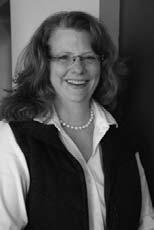
4. Recognize and Encourage Success
Our state has wonderful music teachers who make an impact on our communities, schools, and students. I believe it is the responsibility of AMEA to promote and recognize those in our organization for their longevity and those who are making an impact on our discipline on a regional and national level. We will refine our awards for membership to better highlight those who have served as well as add awards for programs and teachers who strive to the highest levels of performance and education.
In June, the AMEA leadership team traveled to Washington DC for the NAfME Hill Day and National Assembly June 22 - 25, 2016. Greg Gumina, Sara Womack, Savannah Smith, Latrice Green, and I met with representatives from Senator Shelby’s and Senator Sessions’ offices as well as those from Congresswoman Roby, CongresswomanSewell

and Congressman Gary Powell. It is very moving to have the chance to come together with other state MEA organizations to meet with our elected officials and tell them about the great things music teachers do for the students of Alabama.
One of the main items discussed with the legislators was the funding of the Every Child Succeeds Act and how important it was for all students in our state. For the first time, funds will be available through your localities for music education as a part of a well- rounded education. It is very important that each of us gets involved with the decisions on funding at the local school board level.
In summary, one of the wonderful parts of beginning a new school year is the clean slate we start with literally and figuratively. We can change the things we thought ineffective from the previous year and we can highlight what we have found to be successful teaching tools. I hope you will try to find a mentor teacher to help if you are new to the profession. If you are experienced, I hope you will take the time to help a younger teacher. We have the best jobs in the best country in the world. Take time to make a positive impact on other teachers as well as your students. Any and all suggestions for AMEA are appreciated and encouraged. Please feel free to email any of the board if we can help you in any way. Have a great year!
SusanPresident Susan Smith



Saint James School 6010 Vaughn Road Montgomery, AL 36116 president@myamea.org
Immediate Past President
Carl Hancock University of Alabama Box 870366 Tuscaloosa, AL 35487 (205) 3486335 past_president@myamea.org
President, AOA
Samuel Nordlund 405 Buchanan Hall Samford University 800 Lakeshore Dr. Birmingham, AL 35229 snordlun@samford.edu

President, AMEA Collegiate
Joshua Meyer University of Alabama (256) 5661265 jpmeyer@crimson.ua.edu
Industry Representative
Becky Lightfoot Arts Music Shop
3030 East Blvd. Montgomery, AL 36116 334/2712787
beckyl@artsmusicshop.com
Executive Director Editor, Ala Breve Garry Taylor 1600 Manor Dr. NE Cullman, AL 35055 (256) 6362754 executive_director@myamea.org



Garry Taylor, Editor & Advertising Manager 1600 Manor Dr. NE Cullman, AL 35055 (256) 636-2754 amea@bellsouth.net









PresidentElect
Greg Gumina Shades Valley High School 6100 Old Leeds Road Irondale, AL 35210 (205) 9564638 president_elect@myamea.org
Recording Secretary
Carla Gallahan
212 Smith Hall Troy University
Troy, AL 36082 (334) 6703502 recording_secretary@myamea.org
President, AVA
Ginny Coleman
Tuscaloosa County High School 12500 Wildcat Drive Northport, AL 35475 (205) 342 2670 gcoleman@tcss.net
AMEA Collegiate Advisor
Ted Hoffman Univesity of Montevallo Station 6670 Davis Music Building 308 Montevallo, AL 35115 (205) 6656668 ehoffman@montevallo.edu
Assistant Executive Director
Mildred Lanier 101 Hayesbury Lane Pelham, AL 35124
assistant_ed@myamea.org
Treasurer/Registrar
Pat Stegall
AMEA Registration PO Box 3385
Muscle Shoals, AL 35661
treasurer_registrar@myamea.org
President, ABA
Micheal Holmes
Mountain Brook Junior High School 205 Overbrook Rd.
Birmingham, AL 35213 (205) 8713516 x8525 thetubaman@charter.net
President, Elem/Gen
Cliff Huckabee
The Montgomery Academy Lower School Campus 1550 Perry Hill Road Montgomery, AL 36106 3344623790 cliffhuckabee@gmail.com
President, Higher Education
Becky Halliday
University of Montevallo Department of Music Davis 317
Montevallo, AL 35115 (205) 6656666 AHalliday@montevallo.edu
Alabama Department of Education Arts Education Specialist
Andy Meadows 50 North Ripley Street
Montgomery, Alabama 36104 (334) 3531191
ameadows@ALSDE.edu
ADVERTISING
Unless otherwise indicated, permission is granted to NAfME members to reprint articles for educational purposes. Opinions expressed in this publication are not necessarily those of AMEA or the Editor. All announcements & submissions are subject to editorial judgement/revision.The Alabama Music Educators Association

The National Association for Music Education, a voluntary, nonprofit organization representing all phases of music education in schools, colleges, universities,
membership is open to all persons engaged in music teaching or other music education work.
I am honored to succeed Sarah Schrader as President of the Alabama Orchestra Association. Under Sarah’s leadership, AllState Orchestra participation increased, and the AOA successfully ran Alabama’s first ever Orchestra Music Performance Assessment for full orchestras, string orchestras, and guitar ensembles this past April. Hosted by Auburn University, the event was a huge success and we plan for it to become an annual event!
AOA’s new executive board includes President-elect Dr. Guy Harrison (Auburn University), Secretary Dr. Daniel Stevens (UNA), and Treasurer Jacob Frank (Decatur Youth Orchestras). I myself teach at Samford University in Birmingham. The four of us, along with Past-President Sarah Schrader, are professional musicians and educators at all levels, from elementary to higher education. We are all strongly invested in building and strengthening programs across the state, and I encourage you to reach out to any of us with ideas on how we can create, support, and strengthen orchestras
and string ensembles across Alabama.
It is no secret that Alabama lags far behind other states in public school string and orchestra programs. Each student who participates in All-State Orchestra, OMPA, youth orchestra, or their school program is a testament to the parents, teachers, and administrators who are invested in exposing our students to the greatest music of the past 350 years. With a full slate of high profile clinicians and conductors coming to Alabama to work with our children during the AMEA conference, All-State, and OMPA, I hope that even more school administrators will become aware of the value of orchestra and strings. Just imagine the school musical with a live, student orchestra in the pit, or a collaborative concert between the choir and orchestra!
Students in Alabama deserve opportunities to experience string and orchestral playing, just like they do in surrounding states and around the country. The University of Alabama, Samford, Auburn, and UNA are all producing high quality music educators who would love to remain in Alabama and start string or orchestra programs. Instead, they are leaving for opportunities in Georgia, Tennessee, and Texas to name a few. Take pride in not only supporting music education, but supporting professional and youth
orchestras across the state. While we obviously need more string programs, it is just as important that our wind players are introduced to the exhilaration of symphonic playing. Orchestra must not be merely a niche, but an invaluable vehicle of fine art that opens doors to musical appreciation, education, and performance.
I am excited to announce that Dr. Andrew Dabczynski has accepted our invitation to present three sessions at the 2017 AMEA conference as one of our distinguished clinicians. Professor of Music Education at Brigham Young University, Dr. Dabczynski is co-author of the String Explorer series of method books. In addition to an exciting state conference, we will welcome Dr. Sandra Dackow (Festival), Dr. Foster Beyers (Sinfonia), and Dr. Christina Chen-Beyers as our 2017 All-State Orchestra conductors. Under the direction of Dr. Dackow, the Festival Orchestra will present the world premiere of Alejandro Basulto-Martinez’ Triptico de Luz, winner of AOA’s 2017 composition competition. Please visit www.alabamorchestrassociation.org for more information on our guests, and event dates including 2017 OMPA which will occur in the Spring at a date TBD. We welcome you to join us for an exciting upcoming year!

(TheOctoberissueof AlaBreve willprovidecompletedetailsoftheconference, includingtheschedule, performinggroups, clinicians, etc. Thisquickguideisprovidedinadvanceforyourconvenience.)
l Dates: January2123, 2017
l Location: RenaissanceMontgomeryHotelattheConventionCenterandtheEmbassySuitesHotel
l Dynamic Keynote Speaker: Scott Lang
l LobbyperformanceapplicationsareduebyOctober1. SeetheAMEAwebsite (www.myamea.org)forthe form.
l FAMEapplicationsareduebyJanuary8. SeetheAMEAwebsite(www.myamea.org) fortheform.
l Preregisteronline(myamea.org)
l Reservearoomattheconferencerate:


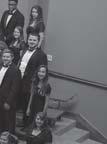
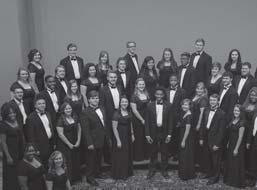
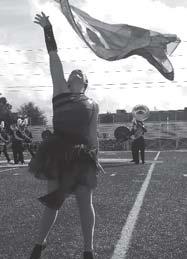
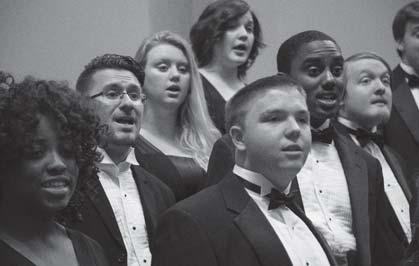
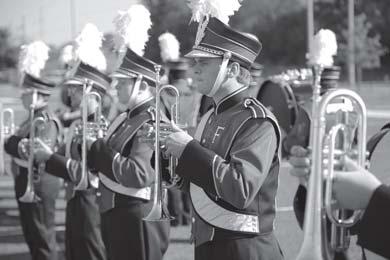
Greetings, and welcome back to a new school year! As I begin my time as President of the Higher Education Division, I would first like to take this opportunity to recognize the contributions of Dr. Jim Zingara. Under his leadership, faculty members from across the state have been engaged in forward-thinking dialogue toward the advancement of music education through AMEA. Alongside President-Elect Mildred Lanier (Jefferson State Community College) and Secretary-Treasurer Katrina Phillips (Alabama State University), I hope to continue strengthening the HED membership through communities of scholarship, productive and engaging conference sessions, and in collaboration with the Collegiate Division.
Each year, the AMEA In-Service Conference offers a poster session for students and faculty who are engaging in innovative and rigorous
studies toward the advancement of music education locally, nationally, and globally. The deadline for submitting a poster is Monday, November 7, 2016 by 11:59 p.m. CST. More information can be found on the AMEA website www.myamea.org. This session gives faculty members an opportunity to meet with colleagues from across the state that may have similar research interests.
This January at the AMEA In-Service Conference, the HED will feature a panel session titled I’ll Follow You: The role of the accompanist in collaborative playing. This interactive session will focus on the collaboration between applied faculty, student, and accompanist in performance preparation. Topics for discussion may include selection of music, rehearsal techniques, communication, and other aspects of accompanying that may maximize successful performances. Immediately following this session, the Higher Education Division Recital will feature the panelists, who will perform the music discussed in the session.
As the coming years bring change to the teacher certification process in the state of

Alabama, it is important for teacher education programs to prepare for the challenges of EdTPA. By working with the Collegiate Division to face this challenge, students and faculty can support each other in their analogous roles.

I hope that the coming school year brings much success, as our university programs prepare students for their future music classrooms. Please contact me with any questions or comments (ahalliday@montevallo.edu). I look forward to working with you!
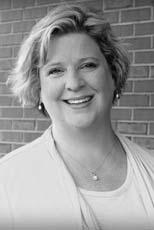
The University of South Alabama Department of Music, through its innovative curriculum, empowers professional musicians, music educators, and those who wish to enrich their lives through the arts. The Department serves the needs of the University to promote general education and to provide a vital cultural link to the great state of Alabama and to the Gulf Coast region. Its excellent facilities and faculty, promotion of technology, and dedication to life-long learning provide a wide spectrum of experiences for both the student and the community.
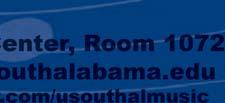

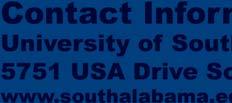
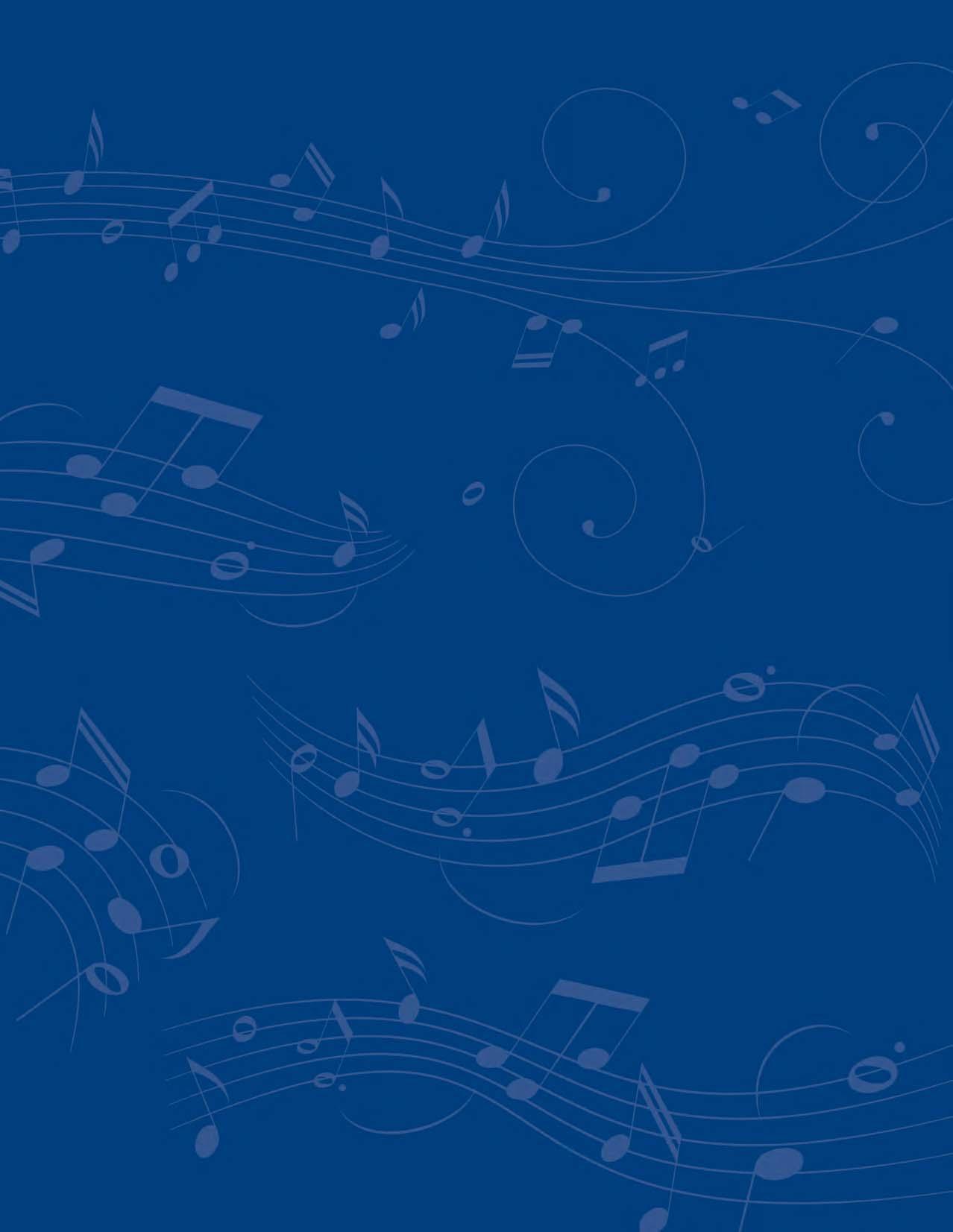

INSTRUMENTAL ENSEMBLES
Wind Ensemble


Symphony Band
Symphony Orchestra
String Ensemble
Jaguar Marching Band
Jaguar Pep Band
Jazz Ensemble




BM with Concentration in Music Education (Instrumental or Vocal)
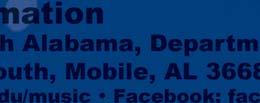

BM with Concentration in Performance (Instrumental or Vocal)


VOCAL ENSEMBLES


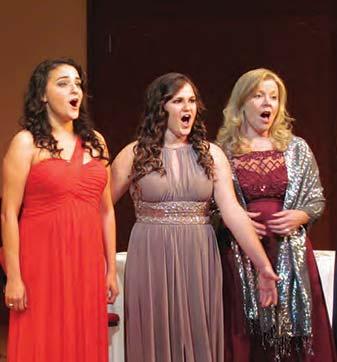
University Chorale
USA Opera Theatre
USA Concert Choir
CHAMBER ENSEMBLES



Flute Choir
Trumpet Ensemble
Trombone Ensemble
Tuba Euphonium Ensemble


Chamber Brass Ensembles
Chamber Woodwind Ensembles

Percussion Ensemble


USA Steel Band
USA World Music Ensemble
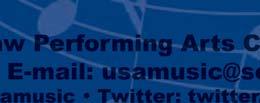
Piano Ensemble
Guitar Ensemble
BM with Concentration in Elective Studies (Business or Specific Outside Fields)

MM with Concentration in Music Education (Instrumental or Vocal)
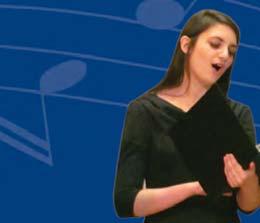
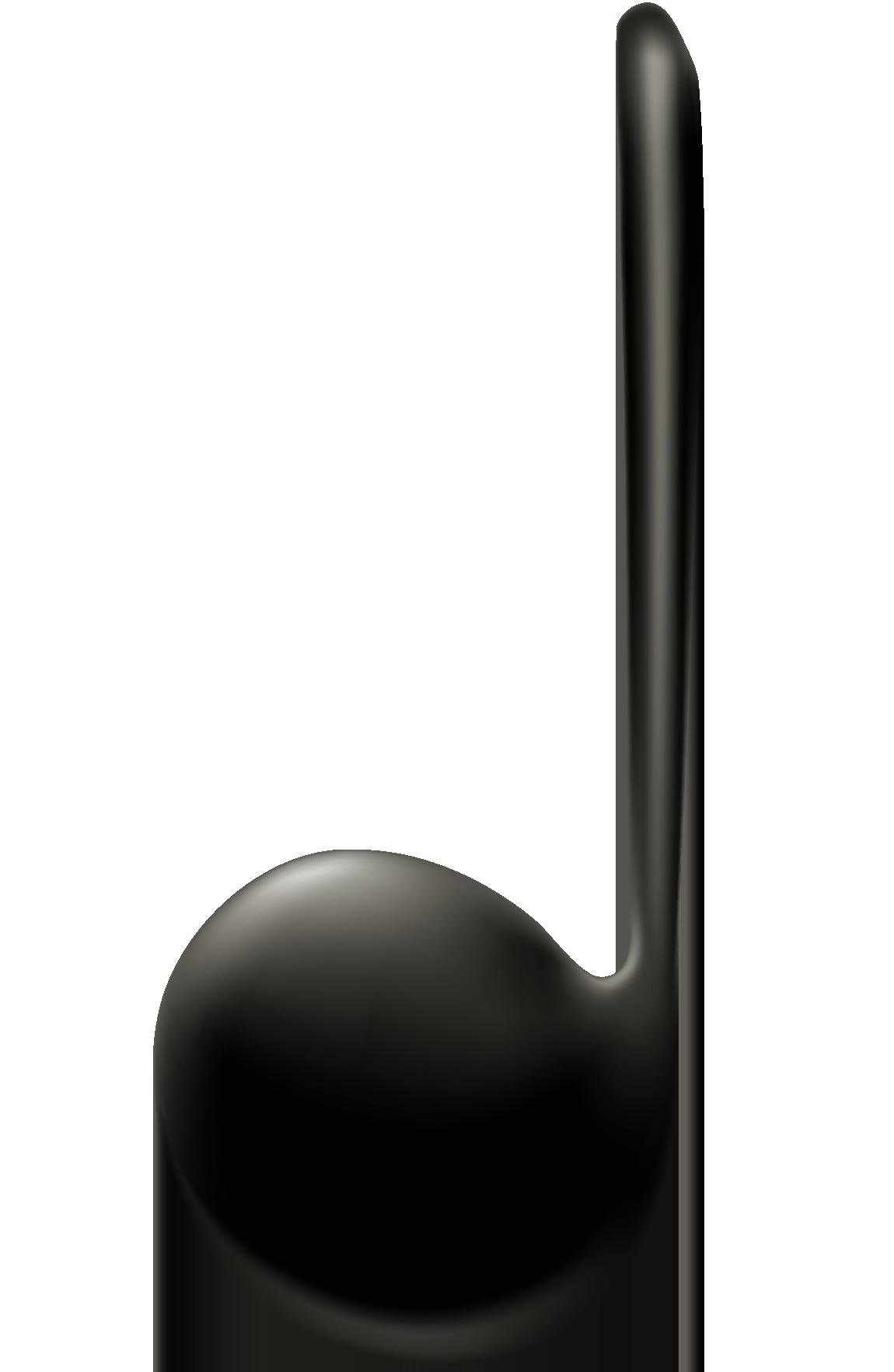
MM with Concentration in Music Performance (Piano and Vocal)
MM with Concentration in Collaborative Keyboard

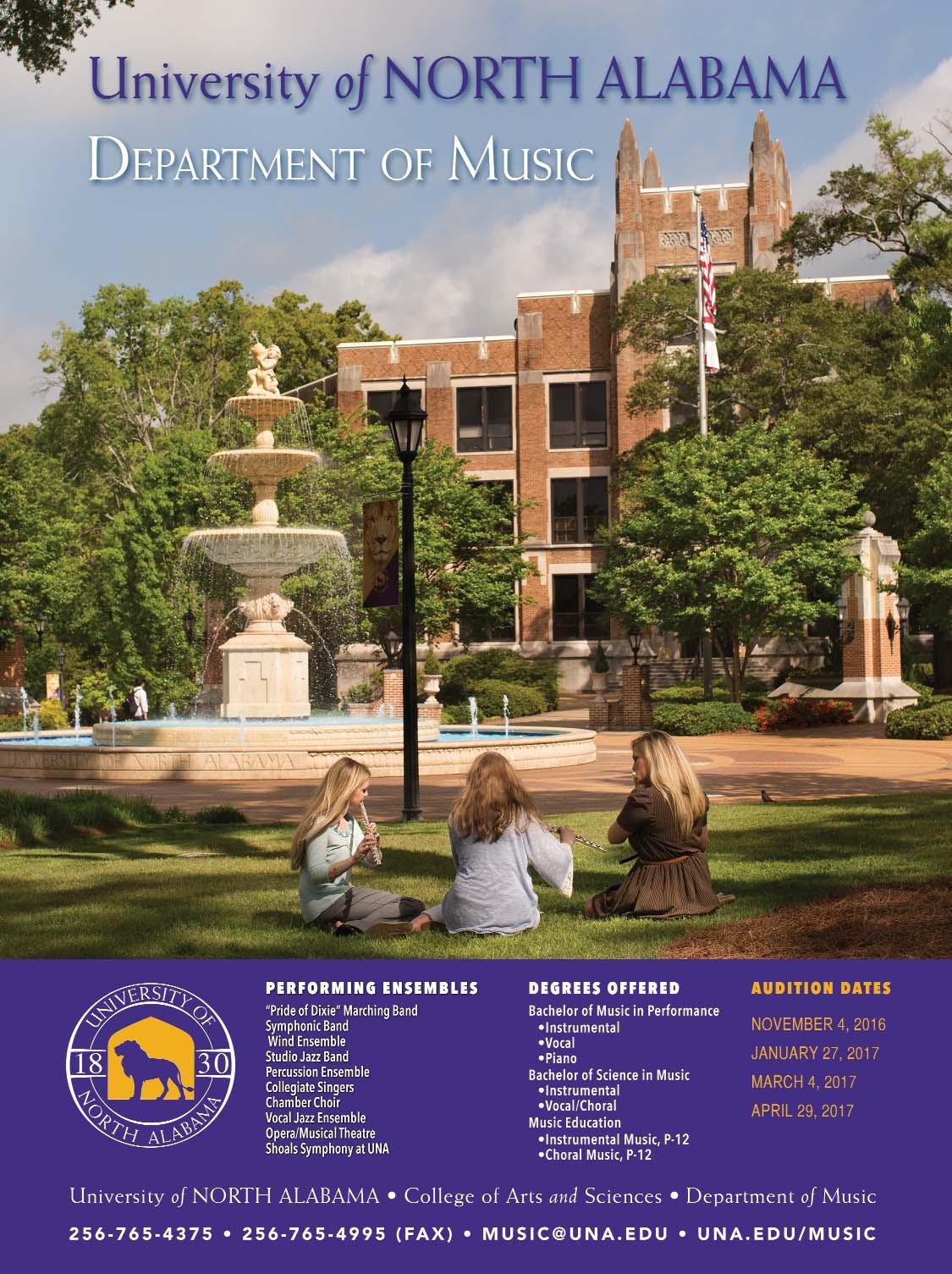
graduates to answer any and all questions we as aspiring music educators have. It will be a great opportunity to not only learn how to best prepare for the teaching field, but also to network and make viable connections to those already there. It is an event you definitely do not want to miss!
Welcome back to another exciting school year! I hope your summer has proved to be a great time of rest and relaxation for all that lies ahead. Before the stress of methods classes, practice logs, and music history hit us full force, I would like to provide you with a small bit of encouragement. We are not just studying to be music educators. We are training to become life changers, culture creators, and superheroes in our own right. Like the teachers who inspired us through music, I firmly believe that each and everyone of you will make an amazing positive impact on the world.
Our largest and most important event this year is the collegiate summit on October 9th. It will be hosted at the University of Alabama in the newly renovated Ferguson Center, and will be catered by one of Tuscaloosa’s local barbecue establishments. In addition to accomplished guest speakers, the board is putting together a panel of recent
Lastly, if you have not already, now is a great time to renew your NAfME membership. Doing so will keep you in the loop with all music education developments and professional opportunities.
The Board is putting all of our creative energy into making this an amazing year for the collegiate division, and I’m very excited to be a part of it. If you have any questions, comments, or concerns please feel free to contact me at any time!
Sincerely,
Joshua Meyer AMEA Collegiate Division President
jpmeyer@crimson.ua.edu
(256)566-1265
New law will help strengthen Alabama’s educational priorities
WHAT: The Every Student Succeeds Act (ESSA) replaces the No Child Left Behind (NCLB) law and affords states greater flexibility. The ESSA encourages states and schools to innovate and at the same time maintain a focus on accountability, an emphasis on state and local systems of improvement, and a more balanced assessment system. The Every Student Succeeds Act (ESSA) Community Engagement Tour will highlight the benefits to Alabama public school students and professionals as well as detail how ESSA will complement Alabama’s Plan 2020.
WHO: Members of the Every Student Succeeds Act Implementation Committee will provide an overview of ESSA, which continues to build upon the framework the Alabama State Department of Education has established for preparing Alabama’s students for college or career upon graduation from high school. Appointed by Governor Robert Bentley, the committee is comprised of educators, lawmakers, school board members and parent advocates. Upon conclusion of the presentation, attendees will have an opportunity to ask questions and provide feedback to ESSA Implementation Committee members on how Alabama can develop a more equitable K-12 public education system. The committee’s work will continue throughout 2016, culminating with a final recommendation made to Governor Bentley, followed by a vote of the Alabama State Board of Education.
WHEN: The Every Student Succeeds Act Community Engagement Tour will be hosted at eight* school systems throughout the state. All tour stops will begin at 6 p.m. and end at 7 p.m., followed by a 30-minute Q&A session. Dates and locations are as follows:
August 9 - Carver High School, Montgomery
August 16 - Auburn High School, Auburn
August 18 - Helena High School, Helena
August 23 - Parker High School, Birmingham
August 25 - Davidson High School, Mobile
September 6 - The Academy for Academics and Arts, Huntsville
*The dates and locations for two additional tour stops will be announced at a later date.
INFORMATION: To learn more about ESSA, visit the Every Student Succeeds Act page on the Alabama State Department of Education website, the Every Student Succeeds Act Implementation Committeepage, or click here. Follow the ESSA Community Engagement Tour on Twitter at #ESSAAlabama.
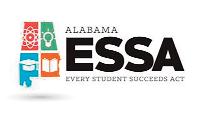
Like the teachers who inspired us through music, I firmly believe that each and everyone of you will make an amazing positive impact on the world.Holmes President, Alabama BandmastersAssociation
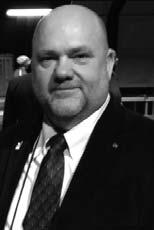
There are so many things related to teaching band that are the same year after year. The fundamentals of teaching children to play an instrument remain the same. Good posture, hand position, embouchure formation, how to enter the band room, where to put your stuff, respect for one another, and the list goes on but does not change. However, if it is year one or year thirty-five, it is an exciting time. Why? Because it is never really the same. Our students are what keeps this journey fresh, interesting, and not routine. I love sixth grade students! They are fun, needy, interesting, open, and smarter than we know. To see them go from not knowing how to put an instrument together to playing with proficiency in just a few months is very special. We are with them as they grow up, and that is why they are so special to us. The students that stick with us from beginning to end are why we come back for “another great year” because we know that someday those are the studentsthat will come back and stand on the podium ready to begin their first great year!
ABA Summer Conference 2016 was “one of the best ever.” That is a comment that was repeated to me many times as we prepared to wrap up. I am positive that if you attended, you were not disappointed. Many thanks to the 313th Army Reserve band for opening our conference with music provided by their fine Brass Quintet. The 313th Jazz Combo provided entertainment and knowledge as they served as the demonstration group for David Allinder’s informative clinic related to the Jazz Band rhythm section. Dr. Rick Good, Jeff Fondren, Nathan Haskew, David Waters, and Stephanie Ezell showcased the wealth of talent we have in our organization by presenting outstanding clinics as well. “The Lure of the Dark Side,” presented by lawyer Emily Hawk Mills, contained information that every educator needed to hear. If her advice is followed, there would never be another educator jailed for inappropriate contact or communication with a student.

What great attendance we had for the Social Hour/Shrimp Boil -approximately160 directors and family members attended.Old FogeySteve McLendon shared some wonderful memories as well as a great message to all that attended. President-Elect Doug Farris is already planning a great 2017 Summer Conference. Thank you to AWB Apparel, Southern Performances, Art’s Music Shop, Demoulin Uniforms, Sound Choices Recording, Super Holiday Tours, and Mouchette Enterprises for serving as sponsors of the Social Hour.Hopefully, you and your family also got in some much needed beach time as well.We will return to Hampton Inn-OrangeBeach June 21-22, 2017.
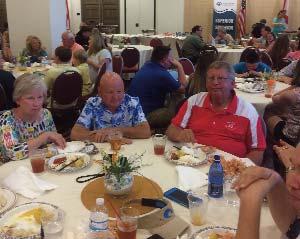
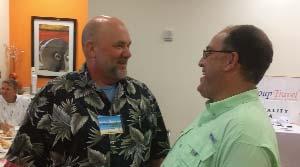
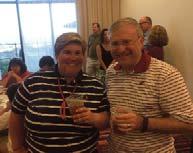

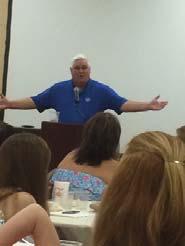
We had a very productive ABA Board meeting.I am honored to be working with such great people. The Music Selection Committee once again has added quite a few new compositions to our cumulative list.The Constitution Committee chaired by Doug Farris submitted a number of recommendations to clean-up our Bylaws and Board Policy. The Bylaw changes will be emailed to all ABA members to review prior to acting on them at the AMEA Conference. Executive SecretaryHarry McAfee received a well-deservedpositive review from the board as well. Thanks to Harry for a job well done.John Cooper and Chris Lindley presented our new Adjudicator Certification
Training Clinic, and it was very well received by all in attendance. This is a “work in progress” and will continue to evolve. Check abafest and our ABA/AMEA webpage for future updates related to the application process and requirements.
As a member of NAfME/AMEA/ABA, you also have responsibilities. Return all dues, fees, registrations, and respond to all correspondence in a timely manner. Renew your NAfME membership now if you have not done so. All Alabama memberships expired in June 2016. Please do not wait until the AMEA In-Service in January to renew as this creates delays in the onsite registrationand pre-registration pickup process. Check the AMEA/ABA website regularly. You will find needed forms, AllState Band audition requirements and etudes, Cumulative Music list, ABA Directory, and other useful and needed information. Check the abafest.com site weekly for announcements and calendar updates. Your ABA state officers anddistrict officers will continue to usethis site to keep you informed as well as have you register for events such as All-State and MPA.
Conference registration andlodging reservations are available now. Visit the AMEA website to access this information. Pre-register today and save. We have a great line-up of performing ensembles and clinics/sessions representing ABA for this conference.
Iwish you success as you begin another great year. AndDON’T FORGET THE SUNSCREEN!
This is one of the most exciting times for music education, and there is no better time to band together, learn from each other, and bring innovative techniques to your classroom from across the country. Music helps shape the way our students understand themselves and the world around them and allows for a deeper engagement with learning.
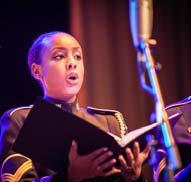
Every year thousands of music educators, future music educators, students, and performers gather to gain in-depth practical knowledge through hundreds of professional development
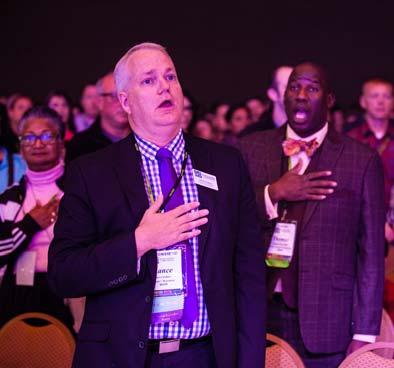
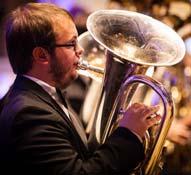
professional development, networking opportunities, around-the-clock performances, and nightly entertainment!
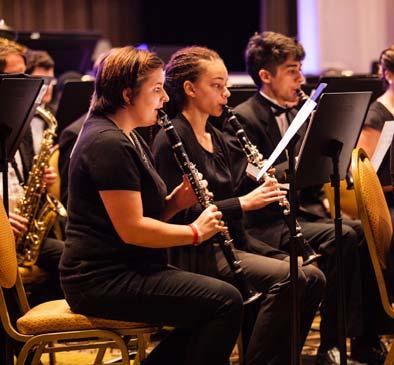


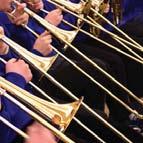

Welcome to another new school year. I am very honored to be trusted with the task of leading the AVA over the next two years. After serving for six years on the AVA Board, I have identified some areas that I believe could use our attention. In this column I would like to discuss three of them: increasing our efficiency through the use of technology, focusing our mission statement, and reaching out to our membership.
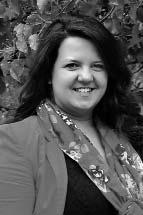
I am very pleased to continue Carl Davis’ initiative to move our organization forward in its use of technologies that facilitate record keeping, registering for events, and communicating with our membership. We have tested several of these technologies over the past few years and feel confident that this is a time to move away from paper notifications and “snail-mail” and make use of the technology that is available to us.
In an effort to increase efficiency and reduce costs, we will be moving more of our communications from hard copy to electronic format. This year, we will e-mail most newsletters and correspondence, including All-State notification letters. We will continue to use tools like Vertical Response to send e-mails to our membership. We will continue to require registration with the AVA database so that we are sure to have your preferred e-mail address on file. We will also use Remind, a communication tool that will allow you to receive reminders of deadlines and other notifications via text message. You can join the AVA Member Remind group now by texting @avadir to 81010.
This year, registration for every AVA event will be available online. Our Executive Secretary/Webmaster is working diligently to have all of these forms ready for us by the beginning of the school year. The AVA Board has been testing the new forms and feedback is overall very positive. We think that you will find them to be very user friendly. However, we realize that with the move to any new technology there will be a learning curve. We will have a short session
on using the new forms at our Fall Workshop. You may also reach out to any of the AVA Board members if you have difficulty when using the new forms.
Moving forward, we hope to find other ways that we can use technology to increase our efficiency. The AVA Board has already begun to explore the potential to reduce our AllState audition expenses through the use of various recording technologies. We welcome your input and ideas in this area.
According to our handbook, the mission of the AVA is to provide a variety of educational experiences for students that will encourage their lifetime appreciation of and participation in the art of choral music. Our goals include promoting cooperation among choral directors in Alabama, enhancing the programs of vocal music in schools in Alabama, providing a means for professional ideas and methods to be shared, and promoting growth and higher standards in music education throughout the state.
In my personal and professional life, I constantly strive to do what I say I am going to do. I do not always succeed. However, it is a goal that I keep in the forefront of my mind because I want to be a person of integrity. As an organization, I believe that we must also do what we say we are going to do. Over the past six years of service to AVA, I have often wondered if we are truly following our mission statement and accomplishing the goals we have made. Do our events and services carry out the mission that we have identified or are we just doing what has always been done? Are there other things that we could be doing instead to better accomplish these goals? Please do not misunderstand me. I firmly believe in the value of many of the things that we do as an organization. But, if we do not occasionally pause to think about what we are doing and why we are doing it, we run the risk of becoming an organization that exists only to perpetuate itself. I would like to challenge you to identify areas where we can improve. Your ideas are always welcome.
There will be no way that we can fulfill our
mission of serving the students in Alabama if we do not reach the teachers. Teachers are our connection to the students. A recent study identified several reasons why Alabama teachers do not participate in AVA events. While many of these circumstances are out of our control, we can do a better job of connecting with our teachers who may be new, struggling, or isolated. Some of our ideas include:
=Continuing the New Teacher Luncheon at Fall Workshop
=Reduced Fall Workshop registration fee for first-year teachers
=Free Fall Workshop registration for veteran teachers who have not attended in the past 3 years
=Free event registration for schools that have not participated in recent years
=Adjusting our performance assessment guidelines to give more adjudication options at SCPA
If you have ideas for other ways that we can connect with teachers who may be new, struggling, or isolated, please let us know. Your feedback is appreciated.
Our Fall Workshop will be held September 9th at First United Methodist Church in Montgomery. Dr. Jeffery Redding, who will also serve as our High School SATB All-State clinician, will present two interest sessions and a reading session. Dr. Andrew Minear, new choral director at UA, will also present a session. We will spend time reading the AllState music, meet briefly with our districts, and answer any questions about online registration forms. JW Pepper will be there to sell All-State music. Register online by visiting www.alavocal.org. Please attend and encourage others to attend as well.
Thank you for taking to the time to read about your professional association. Please send questions, suggestions, or ideas to me at presidentofava@gmail.com. Your feedback is always appreciated. Have a great start to your school year!
GinnyAs we begin this new school year, it is always a good idea to try and take a little time and review where we have come from and also look forward to where we want to travel. I came across this previous contribution to “Tips That Click” many years ago and have reflected on it personally at the beginning of every year since I discovered it. Dr. Johnny Jacobs wrote this in the early 90’s when he was serving as Band Supervisor for the Jefferson County school system after a full and successful career on the podium. Jefferson County was the flagship school system in the state at that time and leadership of Dr. Jacobs and his predecessor, Mr. Larry Deagon, set a benchmark for the instrumental music programs of the entire region. Dr. Jacobs says so many good things in a relatively few words and I hope this article will get your year off to a good start!
Dr. Johnny Jacobs
While trying to arrive at an unusual contribution to this column, I realized that such a contribution would be more likely to come from my point of observation than from what I might say. As a supervisor of bands for the last four years, I have had the opportunity to assist many band directors. In doing this I find myself saying some things over and over. Some of these things are neither new nor profound, but are apparently issues that are prone to escape one’s consciousness in the day-to-day fray. If I find it necessary to give these reminders to my outstanding group of teachers, perhaps they might be meaningful to you the readers of this column. So, here are five bands from my broken record.
Many times I witness a combination of teacher frustration, student frustration, and overall inefficiency, because what is being attempted does not fit the circumstances. In
this case, what is being attempted is not based on the needs of the students but on the needs or preconceptions of the director. Band directors frequently enter new situations with goals based on the kind of band they want to have and the kind of performances they want to present. The band we have in our fantasies, the band someone else had or has, the band we were in high school, or the band we had at another time and place may have little relationship to the present situation.
The teacher’s needs and desires certainly cannot be ignored; however, the goals of a band program should be based on the needs of the students. This means the particular students in the current situation. If I were to say that the director’s desire to perform the Hindemith Symphony or the latest Cadets drill should be forgone until he or she has the band to do it, all would agree. Goal misappropriation, however, does not have to be this obvious or extreme to be problematical. It can be subtle, it can extend to all aspects of the band program, and it can result from too much caution as wells a too much ambition.
Keep an open mind concerning what you plan to attempt until you have assessed the needs of the students, the capabilities of the students, resources of the situation, and the limitations of the situation. Much frustration and inefficiency will be avoided as a result.
I frequently observe directors who are trying to do too much and not doing any of it really well. It is good to have after school practice. It is good to have section rehearsals. It is good to have jazz ensemble. It is good for every student to play a solo and play in a small ensemble. It is good to give private lessons. It is good to have a pass off system. It is good to hear challenges. It is good to have visiting clinicians. It is good to teach theory and appreciation. It is good
to take students to honor band. It is good to go to contest. It is good to go to band camp. It is good to play concerts. Do you see the point? Too much good can become superficially executed; then it ceases to be truly good.
The same point can be made in the organizational area of the band. Someone somewhere has devised a form for every conceivable purpose. The problem is that someone has to fill them out and someone has to keep up with them. There are, of course, certain things that a responsible, ethical band director has to do. There are some who do not do these things, because they are unethical and irresponsible. They glide by with far less than appropriate effort. There are also some directors who try to implement every good idea that anybody ever had. In most school settings this is futile.
Be realistic. Do the ethical basics and whatever else you can add and still do a thorough job. Your students will be better off than if you attempt too much and do it haphazardly, and you might make it to retirement without burning out.
“My band would be a lot better if my kids would practice at home.” Have you ever said or heard this? It is a worthless statement and is probably not even true.
Students need to be motivated to practice individually. They need to be taught how to practice successfully. How good your band is will definitely relate to how successful you are at getting them to do it. You do not, however, have to depend nor should you depend, on their doing it for the band to be good and to be successful. (I am talking to most folks. If “good” and successful” to you means a standing ovation at the Midwest Clinic, I am probably not talking to you.)

The fact is that a great many students, who turn out to be very productive contributors, never develop the ability to make a lot of progress on their own. They are not motivated to practice enough (they are more group oriented). They do not remember what to practice, nor do they remember how you said to practice it. You must guide their practice in class by drilling on fundamentals everyday. Then you must take a problem solving approach to performance preparation that relates to the fundamentals drilled.
Whatever it is that you feel is necessary for your students to do, see that they do it while you are with them. What they then do on their own will be icing on the cake.

A class should be organized so that you drill fundamentals, teach new material and review previously taught material, while maintaining a positive emotional and mental climate. Many directors are far better at
correcting mistakes than they are at keeping the class moving in a positive psychological flow. Here are some tips on how to do this:
a. Do basic drills first.

b. Secondly, move into detailed new teaching. Stay in this mode only as long as they students’ concentration and discipline are at their high level.
c. Thirdly, review previously taught material with considerable emphasis on continuity.

d. Toward the end of class, play through something that involves everyone and that will affect everyone positively.

e. Play more and talk less.
f. Work on small tasks in rapid succession.
g. Utilize the “Joe Friday Method”, “Just The Facts.” Spend more time telling the students what to do and less time explaining what they did wrong. (Much of the time it is necessary only to have the solution explained. It is not always necessary to explain the mistake.)
h. Devise tasks that will gradually bring execution from where it is to where you want it.




5. DON’T GIVE UP
Being a band director is harder than it ever was, but students need you more than they ever have. It is not easy to be growing up at this time. The most important good you do may never show up in your band’s performance.
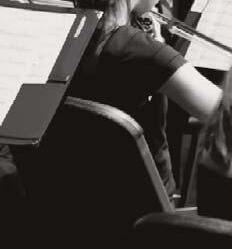


Rho Chapter of Phi Beta Mu International Bandmaster Fraternity is committed to the improvement of bands and band instruction in this state. Comments on this column and ideas for future columns are welcome! Please email: pemin@mac.com
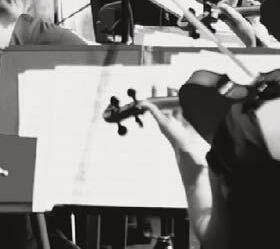
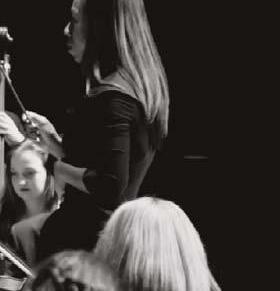
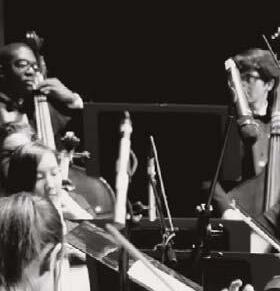
Make music the soundtrack to your tuition-free, public education, grades 7-12. At the Alabama School of Fine Arts you will engage in a minimum of 3 hours a day of professional music instruction while earning your high school diploma. Whether you sing or play strings, wind, brass or percussion, play for keeps at ASFA. Boarding facilities available. Audition and admission information is available online.
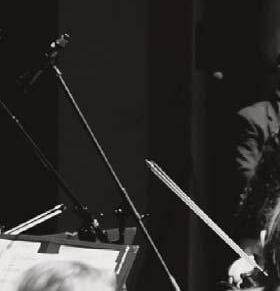
partnering with us and hosting the festival at Samford.
I hope this message finds every one well after a restful summer. I am starting my second year as the President of the Elementary/General Division, and I look forward to serving you once again. Phil Wilson will continue as President-Elect preparing to take over as President in summer of 2017. Ben and Kristina Sisco will continue as our Music Festival Directors along with the rest of the Elementary Division Executive Board and District Officers.
Our 10th Annual Elementary Music Festival is coming up on Friday, October 21st, 2016 at Samford University. We have over 45 schools committed to participate totaling about 450 4th & 5th grade students from all over the state. We will have Roger Sams and Vicki Portis as clinicians, and we thank Dr. Susanne Burgess from Samford University for
The following day from 9 AM till 3 PM (Saturday, October 22nd), we will have a joint AMEA/AOSA teacher workshop at a local elementary school in the Birmingham area. We are still working out all the details and we will email out registration information once it is available. If you are not receiving emails from the Elementary Division, please send us an email at: elementaryamea@gmail.com and we will gladly add you to our email list.
Finally, our AMEA Annual In-service will be Jan 19th – 21st, 2017 at the Renaissance Hotel & Conference Center in Montgomery. This will be our last year in Montgomery as we make the move to Birmingham in 2018. We are excited to have some outstanding clinicians and exhibitors this year. First, we will have Andrea Coleman with us on Thursday and Friday. She will also do a fun evening session on that Friday night. We will also have Roger Sams, Georgia Newlin, and David Frego from Music is Elementary, and they will present throughout the In-Service and will have a Thursday night fun session.
June
The AMEA Governing Board met at Saint James School in Montgomery, Alabama on June 9, 2016 . The meeting was called to order at 10:00 a.m. by AMEA President Susan Smith. Present at the meeting: Susan Smith, Carl Hancock, Carla Gallahan,Garry Taylor,Mike Holmes, Doug Farris,Cliff Huckabee,Ted Hoffman,Greg Gumina, Pat Stegall, Ginny Coleman, Sam Norland, Josh Meyer, Becky Halliday, Frank Buck, Becky Lightfoot, and Andy Meadows.
Dr. Larry McLemore, Head of School, Saint James School, welcomed the AMEA Board to the campus.
The minutes of the January 20, January 21, and January 23, 2016 meetings of the AMEA Board were read by Recording Secretary Carla Gallahan. The minutes were approved as read (Hancock, Norlund).
Garry Taylor presented and discussed the AMEA Financial Report.
Visit the AMEA website (www.myamea.org) for officer and division reports
Old Business
The Board conducted a brief review of the AMEA Handbook.
Andy Meadows, ASDOE, Arts Education Specialist, presented/discussed information regarding Arts Education and the Course of Study.
AMEA 2016 Conference registration went very well with the assistance of NAfME. We will request the same assistance for the 2017 Conference.
FAME Scholarship – the Board reviewed/voted on student applications.
Assistant Executive Director position – the search and interview process for this position was completed. Mildred Lanier was recommended for this position. A motion was made to accept the committee’s recommendation (Holmes, Hancock). Passed.
Strategic Plan update – a motion was made to review our Strategic Plan biannually (Hancock, Norlund). Passed.
Honor Ensembles Directors were notified on Monday, June 6 and students will be notified beginning Monday, June 13, 2016.
Budget Report – the proposed budget was presented and discussed by Carl Hancock and Garry Taylor. A motion
Music is Elementary will also have a booth in the exhibit hall as last year. We will also have two elementary performances in the concert hall along with other sessions of interest to our elementary music teachers. I am very excited about the 2017 In-service and encourage everyone to attend! Please be sure to pre-register and book your hotel rooms at the special conference rate! You can find links to do both online at www.myamea.org.
I am honored to serve our elementary/ general division as President, and I look forward to seeing you at one of more of our upcoming events!
Respectfully Submitted,
Cliff Huckabeewas made to hire Carl Hancock to serve as webmaster and social media advisor for $1,500.00 per year (Huckabee, Coleman). Passed. A motion was made to accept the budget as edited (Gumina, Huckabee). Passed.
Garry Taylor conducted Leadership Training for the AMEA Executive Board and discussed 2017 Conference Planning.

National Assembly – College Summit – Hill Day will be held June 22-26, 2016.
Ala Breve column deadlines: Fall, July 15, 2016; Winter, September 15, 2016; Spring, January 15, 2017; Summer, April 15, 2017.
The Southern Division meeting will be held September 11-12, 2016, in Atlanta, GA.
Respectfully submitted,
Dr. Carla Gallahan Recording SecretaryFriday, February 24, 2017
Saturday, February 25, 2017
Friday, March 3, 2017

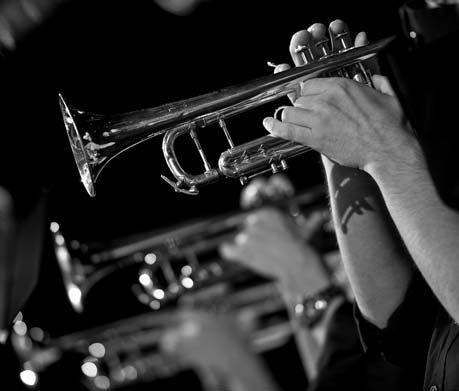
Saturday, March 4, 2017
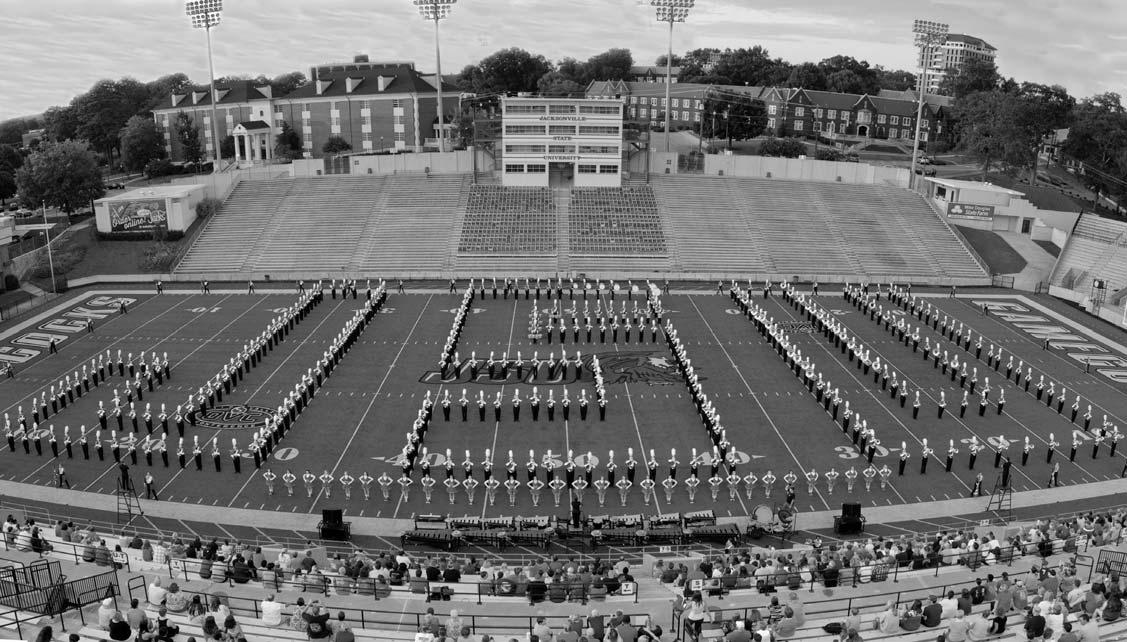
I have loved music for as long as I can remember. In fact, the first voice I heard after I was born wasn’t one of my parents’ or the doctor’s voices, it was the melodious sounds of Frank Sinatra’s voice and my dad playing along on his guitar. From the very beginning of my life, I was exposed to music. As a toddler, I attended Kindermusic which led to taking piano lessons in early elementary school. Later in my elementary school years, I was introduced to the recorder. I fell in love with the recorder and made the Recorder Allstars ensemble allowing me an opportunity to perform with a music group for the first time at the University of Alabama. In addition to that, my dad was always playing his guitar or the keyboard and singing around our house. When I was three, my dad bought me a guitar and encouraged me to play and sing with him. Later in life, he taught me that music could be an escape from frustrations and stress and he encouraged me to use the keyboard to vent my frustrations.
As a rising 6th grader heading to middle school, I was introduced to the band. I chose to play the clarinet and haven’t looked back. It was here that I became inspired to become a music educator specifically. The joy of teaching resonated within me from the very first rehearsal as I watched my own band directors at work and saw their passion and love for music. Even in middle school, I saw the fire my band director Mr. Peters had for his profession. I wanted to be that excited and passionate about something. I soon found that it was easy for me to feel this passion with music. My father was also a music major and although he doesn’t work in the field, his love
for music is evident in everything he does. Twenty years after college, he’s still playing his saxophone whenever he can and singing all the time. He instilled a respect for all kinds of music in me when I was young and he and my mother have continually supported me as I have grown throughout my musical journey. In addition to that, my father also started my music theory lessons when I was very young. Obviously most of it didn’t make any sense to me at that time. Just imagine him trying to explain to a five year old what specific type of cadence just played through the radio. As I grew older, though, I began to understand and appreciate what he was telling me. It helped me to become a better player and also better appreciate what was happening in the other parts around me. These guides have helped me to develop into a young musician and have definitely inspired me to continue their passion for teaching and become a music educator myself.
Music is always the place I can go to make myself feel good and I would like to help other people have this feeling. I want to have music in my life forever. In addition to my love of music itself, I want to instill that love in others. I will be forever grateful to my band directors, music teachers, and parents for allowing me to have the joy of music in my life and I would like to continue the cycle by giving someone else this amazing gift.
I believe everyone should have access to music education because music changes lives. Music transcends all the boundaries of race, gender, economic status, and distance. It connects us all and allows students to interact with others in ways that they may never have had otherwise. I had the opportunity to visit an internationally renowned music college last summer. While there, I met a rising high school senior much like myself except he lived in India. India seemed a world away to me at the time. Because we both had a passion for music, however, we spoke a similar language. Within minutes we connected. We
communicated as friends, and not as strangers, all because of our love of music. Giving a person the chance to learn about music opens up a whole new world of expression to them and allows them to expand their minds in an entirely different way. Children that have been exposed to music education tend to do better in school. Some of my earliest memories of learning skills are from singing and dancing along with Barney. I remember music and movement being a daily part of my kindergarten class. Music teaches things in a way that differs from the regular lecture. A student learns from experiencing instead of from just listening. We learn and apply math skills through the counting structures and patterns in music. This also helps us to see patterns in the real world resulting in a broadening of our scientific thinking. I’ve seen classmates even make up little songs to help them remember facts for tests. In this way, music serves as a study guide and a quick reference to recall facts. Music touches all facets of the school experience. I have had the privilege of performing before a thousand or so primary aged students. They come in very talkative, but once the music begins, the room transforms. If a familiar song is played the thousand become one in song and movement. Music can also be a stress reliever. For me, going to band is a chance to throw myself into the music and to forget about everything else. In middle school, I had band at the end of the day and it allowed me a little time to get away from the stressors my day had presented. In contrast, in high school I had band first period every day. This allowed me to start my day with something I love and usually put me in a great mood to begin my day. A music class can help calm stress, improve a student’s day, build on academic skills, and help improve a student’s overall self-concept. Music is also one of the easiest ways to express yourself. Whether it is through playing an instrument, singing, writing, or even dancing, music brings a way to communicate feelings that words alone just cannot. In each of these ways, music can change lives. As a result, I believe everyone should have access to music education.
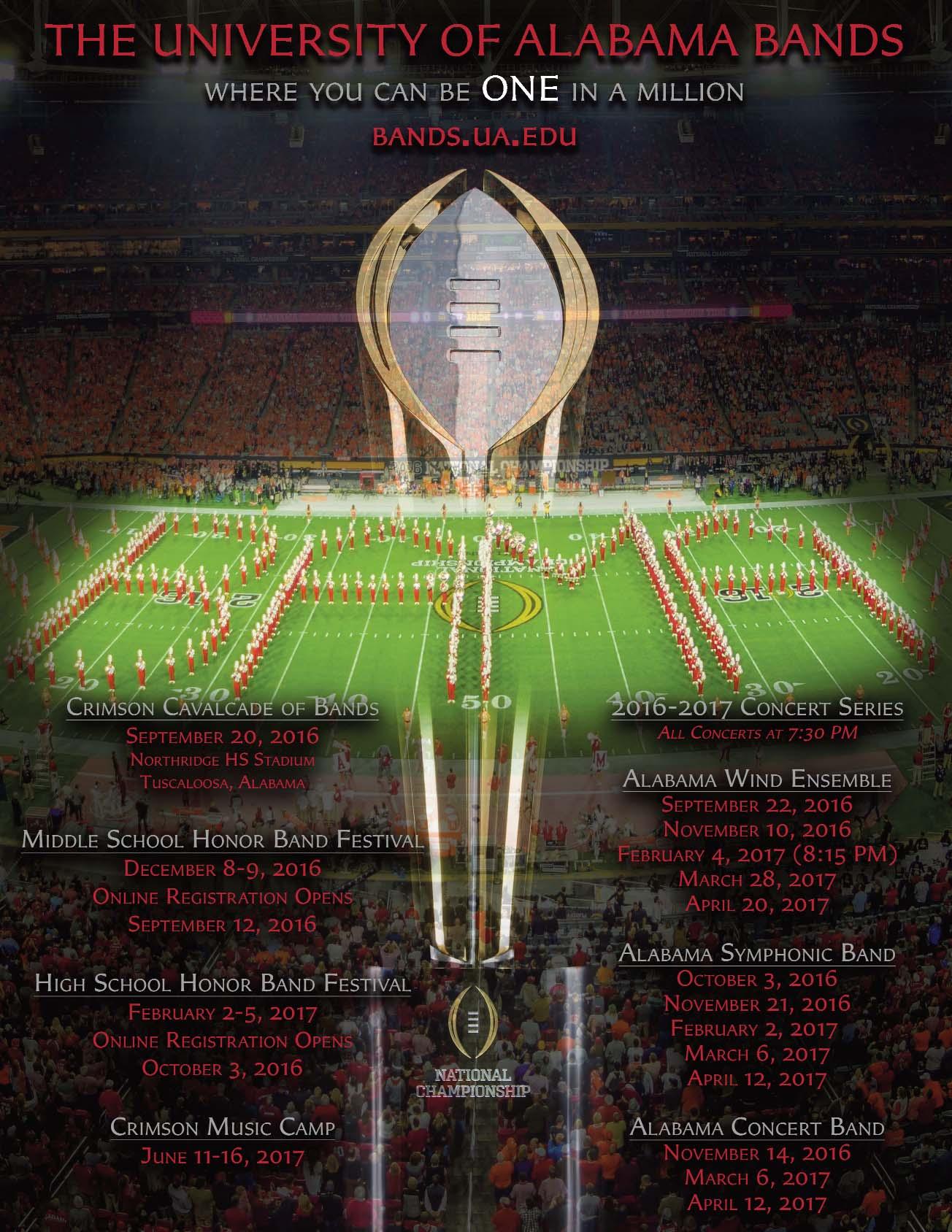





























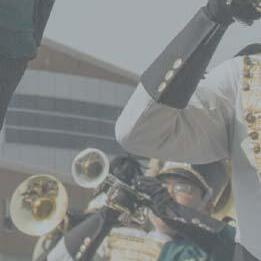
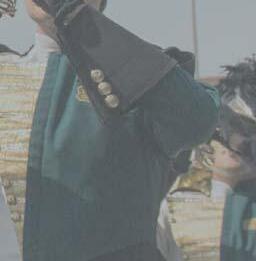

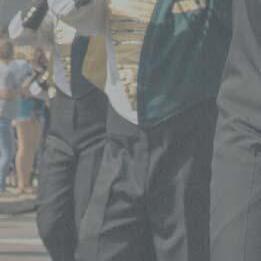

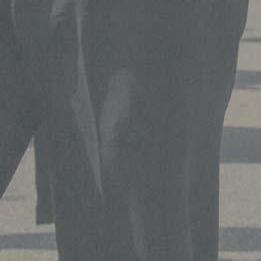

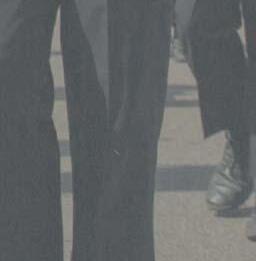
To arrange a visit, email music@uab.edu or call 205 934-7376



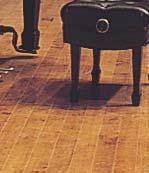



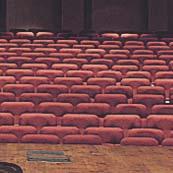
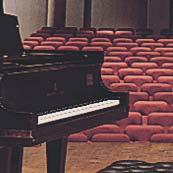




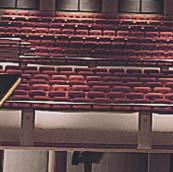




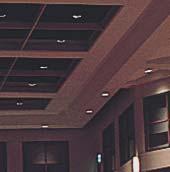


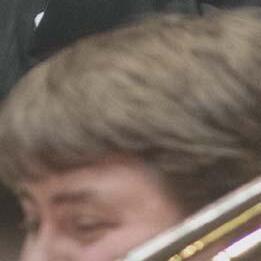






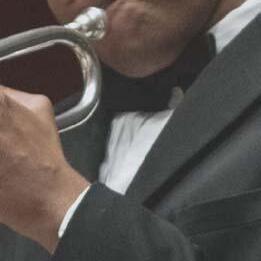
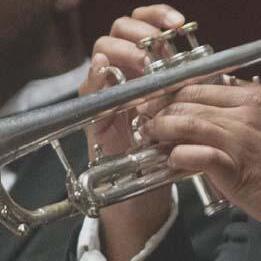
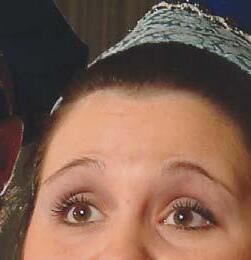




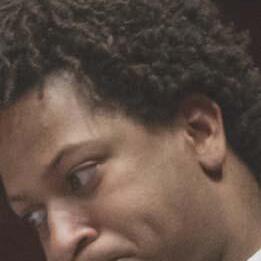









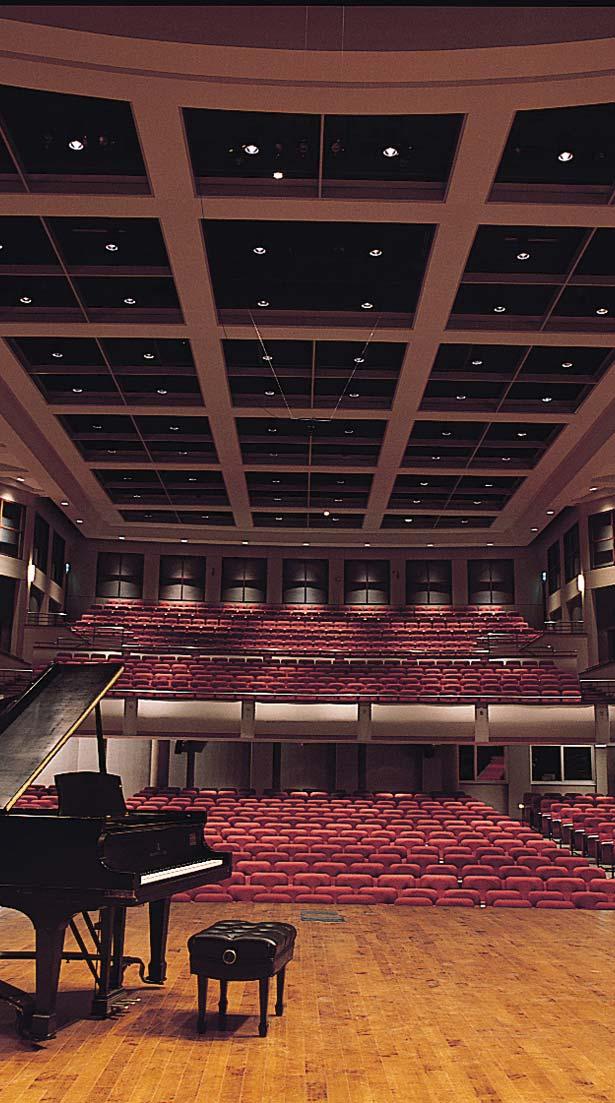

One Pre-Game S alf- hemes each season









ember of the Jaguar Marching Band receives a scholarship and travel opportunities to away games and exhibitions atching university-provided wind instruments
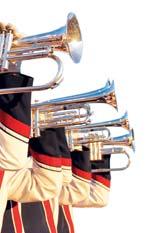




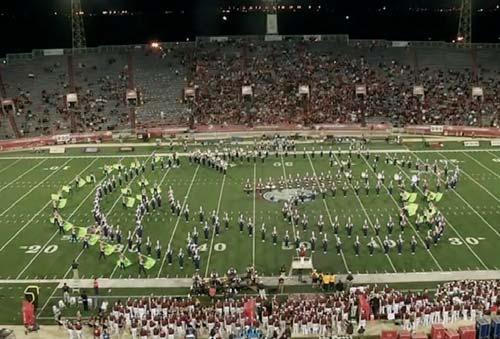
Fastest growing university in the state and No fees and No fundraising


















































For more Information about AUDITION DATES visit www.jaguarmarchingband.org or call 251-460-6136

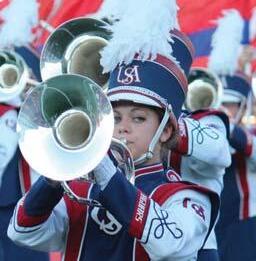

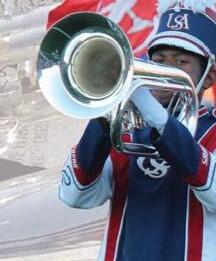







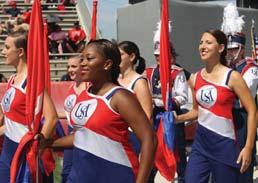

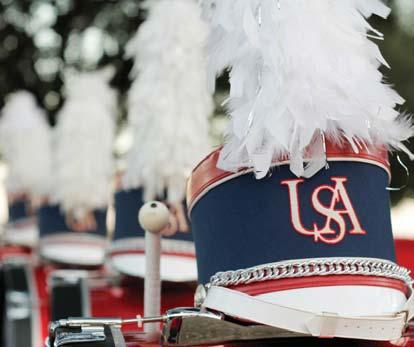

Throughout history, public education has often been the focus of national discussion. Today, teachers and teaching is the target of every pundit, politician and self-proclaimed expert. If you follow the noise, you will hear teachers blamed for everything from failing schools to bankrupting state budgets.
Yes, it’s true that too many children in too many school districts fail. But let’s not loss sight of the improvements we have made with a quickly changing student demographic for whom English is a second language and for children growing up in homes where parents have little or no formal education.
Most teachers still lack the financial, scientific and technological resources necessary to maximize instruction and improve their effectiveness. We are responsible for preparing students for the twentyfirst century without the resources or common tools of the modern work world.
The world of public education and the future of teaching has changed dramatically over the last decade. The economy, new technology and changing demographics are three important factors that have changed the face of education and the way teachers teach.To insure student learning, teachers today must possess a combination of unique human and pedagogical skills.
The Human Factor:
Education needs teachers who see teaching as a career calling to which they are prepared and ready to pursue as their life long work. All teachers must demonstrate real pleasure in teaching. Their subject area should be a true source of joy which they desire to share with students. A love for children and a concern for their intellectual development as well as their emotional and physical well-being is a critical characteristic necessary for success. Outstanding teachers understand the importance of maintaining excellence in teaching and learning.
“It’s all about relationships”
Building trusting relationships with students is crucial to successful social interactions with your students. Effective teachers have developed an important set of unique social skills that allow them to successfully interact with their students. Chief among these skills is:
1. An understanding that words and actions affect students
2. The discipline to censor their comments and use tact
3. The ability to be flexible
4. The ability to read facial expressions
5. The means to modulate student anxiety
6. The ability to change student behavior
7. The capacity for empathy
Pedagogy:
It has always been expected that teachers know their subject matter well enough to transfer their knowledge to their students. Today, teachers need to be experts in their field. Not only must they know the history of their subject, but they must understand the full scope and sequence of the curriculum and all the latest research that effects their subject area. Teachers need to master two types of knowledge:
Content Knowledge which is a deep knowledge of the subject to be taught, the applicable theories, principals and ideas of a specific discipline.
Curricular knowledge which involves the scope and sequence of concepts as well as the forms and means for communicating content.

How will your students learn the subject matter?
What new skills and knowledge should your students develop?
How will you help your students gain literacy?
How will your students use their learning?
How will you enable your students to enjoy their learning xperiences?
How will your students learn to inquire and discover new information?
How will your student self-assess their learning?
The economic conditions of the first quarter of the twenty-first century have created trying times for public education. The economic recession has caused serious tax shortfalls resulting in lower state aid to public education.Since taxes and state aid are the backbone of educational funding, schools have had to make severe budget cuts to compensate for this significant loss of funding. Such conditions have translated into program reductions, program elimination and fewer teaching positions.
Today, many students speak different languages and have different cultural traditions. More than half of the foreign born children in the United States are Hispanic and speak Spanish as their native language. Although trends in immigration and birth rates predict no single racial or ethnic group will make up a majority of the population in the very near future, the Hispanic population is growing faster than all the other racial and ethnic groups combined.
Being prepared to address the changing cultural face of today’s students requires a new approach to teaching. An approach that focuses on the following questions about diversity, culture, language and differentiation. Ask yourself:
Do you hold a positive view of diversity?
Are you very familiar with the cultures of the students in your classroom?
Can you understand and speak their native language? Are the principals of “Differentiated Instruction” applied?
Technology
Today, teachers need to make the integration of technology into their curriculum a priority. Students expect to have and use technology in their classrooms. They are part of the new digital and informational age.
Teachers who incorporate various forms of technology in their instruction have more motivated students. When technology is effectively implemented in the classroom, it makes significant difference in the level of student learning. Technology allows students to become active participants in the learning process.
The following are essential technology skills a teacher should understand and be able to use in the teaching / learning process:
Conclusion:
Although teachers today continue to be faced with lower wages than other occupations requiring the same or less formal education, individuals motivated to teach today must commit to developing a unique set of skills while exhibiting the best of human qualities; the desire to give, to contribute and to make a difference. If the definition of a “hero” is a person of distinguished courage and ability who displays self-sacrifice for the good of humanity, then teachers today are truly society’s heroes.
Joseph Pergola is the retired Director of Fine Arts from the William FloydSchool Districton EasternLong Island, New York. A graduate of the New York College of Music,he received his undergraduate degree and teacher
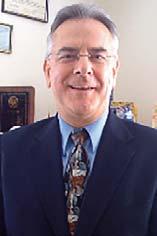
certiEicationfromDowlingCollege,aMasters Degree from SUNY Stony Brook and his AdministrativeDegree from C.W. Post University.
During his tenureat WilliamFloyd, he taught elementary, middle school and high school band. His performance ensemblesreceived the highest ratingatNew YorkState Ensemble Adjudication for21 consecutiveyears.
Shortly after being named Director of Fine Arts atWillaim Floyd,the musicdepartment wasnamedaMENC Model Music Program. Both the NewYork State Theater Association andthe National Theater Association named Mr. Pergola, Arts Administrator of Year.
He currently works for the NationalEducation ServiceCompany as Director of Education and Arts Development and is a member of the adjunct faculty atC.W.Post / Long Island University. Mr. Pergola is apublished author withnumerous booksand articlesto his credit and serves as a frequent clinician at MENC Conferences throughout the UnitedStates.
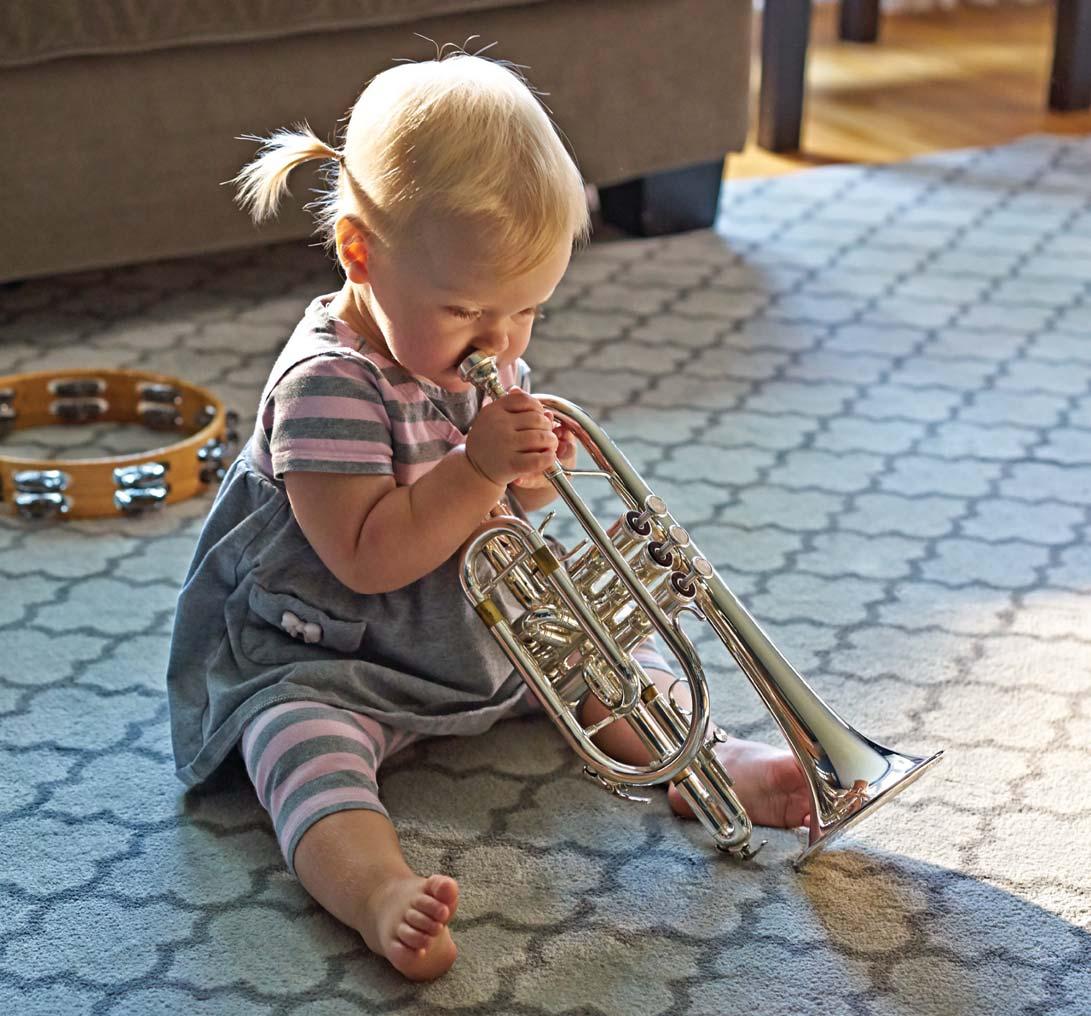

News and Happenings from Alabama’s Colleges and Universities
Samford’s Marching Band has New Director
Samford University’s School of the Arts announces the appointment of Tim Heath as the new Director of Athletic Bands and assistant professor of Instrumental Music Education. Previously, he was a graduate teaching assistant with The University of Alabama bands, where he is a candidate for the educational doctorate in music education.
Tim’s other marching band experiences include serving as the front ensemble coordinator for the Music City Drum & Bugle Corps and staff positions with Methodist University’s “Pride of the Carolina’s” in Fayetteville, NC, and the University of North Carolina at Pembroke’s “Spirit of the Carolina’s” in Pembroke, NC. He was also the Director of Bands at Spring Creek High School in Seven Springs, NC. He has adjudicated for the marching band activity in North Carolina, Virginia, and Alabama.
Tim has presented at sessions and research at state and national music conferences and is published in Percussive Notes and The Instrumentalist. He holds a Bachelor’s degree from The University of North Carolina at Greensboro and a Master’s degree from The University of North Carolina at Pembroke.
For more information about Samford’s marching band program, contact Tim at 205726-2485 or email him at theath@samford.edu.
As a new school year begins, we are grateful to AMEA for providing this opportunity to share information with our music colleagues and music students across the state.
Up-coming Annual Events:
Southeastern United States Middle School Band Clinic – Dec. 1-3, 2016. Contact Dr. Mark Walker
Southeastern United States Choral Clinic – Jan. 13-14, 2017.
Contact Dr. Diane Orlofsky
Southeastern United States HS Honor Band/Conductors Clinic – Feb. 2-4, 2017.
Contact Dr. Carla Gallahan
Guitar Festival – Feb. 19, 2017.
Contact Dr. Robert Gibson
Vocal Jazz Festival – Mar. 22-23, 2017. Contact Dr. Diane Orlofsky
Clarinet Day – Mar. 25, 2017. Contact Dr. Tim Phillips
Additional information about the John M. Long School of Music may be found at music.troy.edu. We invite you to visit us online or in person soon.
All music curricula require an audition for admission and/or placement into private lesson study. Check out our website for the application to the Department of Music and audition requirements: www.auburn.edu/music.
Don’t miss our All-State Workshop on Saturday, December 10, 2016 for students auditioning for 2017 all-state ensembles on wind, brass, or percussion instruments. The Auburn University All-State Workshop is designed to help students enhance their audition and performance skills. The workshop will include a variety of topics that target each element of the Alabama all-state audition: scales, technique, phrasing, and sight-reading. Students will be coached on specifics related to each required etude, and suggestions for improvement and sightreading practice techniques will be provided. Faculty performers will discuss the audition process from both the performer and adjudicator perspectives. Registration information is available on our website
The 2017 Alabama Intercollegiate Band will perform in January at the Alabama Music Educators Association In-service Conference in Montgomery. The Alabama Intercollegiate Band was designed by Alabama college/university band directors to be a collaborative, educational experience. Dr. John Locke, Director of Bands at the University of North Carolina Greensboro, will be the conductor.
Auburn University’s Department of Music is pleased to announce the 2017 audition dates for all students for admission into music curricula, our All-State Workshop for instrumental students, and our annual Honor Band Festivals.
2017 Audition Dates:
Thursday, February 9, 2017 for wind, brass, and percussion students participating in the 2017 Symphonic Honor Band
Saturday, February 11, 2017 for voice and piano students.
Saturday, February 18, 2017 for wind, brass, percussion, string, and piano students.
The Auburn University Bands is pleased to hold the annual Marching Honor Band (Saturday, September 20, 2016) and two annual symphonic band festivals, one for Junior High and Middle School students (February 2-4, 2017) and another for High School students (February 9-11, 2017). Both festivals include three separate honor bands, along with special guest conductors and clinicians, and end with a final performance by all bands for parents and the community. More information can be found on the Auburn University Band website: http://band.auburn.edu/event/index.htm. I invite you to read about our distinguished faculty, major performing ensembles, programs of study, and available scholarships, and assistantships on our website at: www.auburn.edu/music. Contact the Department of Music at 334-844-4165 or music@auburn.edu if you have questions about our degree programs or offerings.
War Eagle!
Rest
Ralph Vaughan Williams (1872-1958)
Text: Christina Rossetti (1830-1894)
SSATB, unaccompanied (with piano rehearsal part)
Publisher: ECS Publishing (1.2478)
Approximate performance time: (ca. 3’30”) YouTube performance (Bob Cole Conservatory, Cal State University Long Beach University Choir, Olga Spriggs, Conductor https://www.youtube.com/watch?v=tT6VI OV_m88)
Ralph Vaughan Williams masterfully sets this Christina Rossetti religious sonnet with the delicate simplicity of a folk song and the reverence of a motet. While death is never specifically mentioned in the piece, it is alluded to as a long sleep or rest. The narrator doesn’t appear to be particularly sad about the death but speaks with a calm assurance that life is eternal and her rest is blessed. Vaughan Williams does a remarkable job of subtly text painting by carefully controlling texture, strategically placing unexpected nonharmonic tones, and delicately balancing sound and silence. This is a jewel in the repertoire that deserves to be heard!
O Earth, lie heavily upon her eyes;
Seal her sweet eyes weary of watching, Earth;
Lie close around her; leave no room for mirth
With its harsh laughter, nor for sound of sighs. She hath no questions, she hath no replies, Hush’d in and curtained with a blessed dearth
Of all that irked her from the hour of birth; With stillness that is almost Paradise. Darkness more clear than noonday holdeth her, Silence more musical than any song; Even her very heart has ceased to stir: Until the morning of Eternity
Her rest shall not begin nor end, but be; And when she wakes she will not think it long.
Songs and Sonnets
George Shearing (1919-2011)
Text: William Shakespeare (1564? – 1616)
SATB, piano and double bass (optional)
Publisher: Hindon Publications, HMB 226 (bass part, 226-a)
Approximate performance time: 17’30”
(YouTube performance: University of North Texas University Singers, Richard Sparks, Conductor
https://www.youtube.com/watch?v=Nl5gfa 4cjdA)
Looking for something lighthearted and
whimsical to pair with Renaissance madrigals? Look no further than George Shearing’s adaptations of Shakespearean texts, Songs and Sonnets. Born blind and the youngest of nine children, Sir George Shearing received his only formal music education at the Linden Lodge School for the Blind. Shearing went on to become one of the world’s most influential jazz composers and pianists, composing over 300 songs (including the jazz standard, The Lullaby of Birdland). Shearing’s solos often drew on the music of Satie, Delius, and Debussy for inspiration. His affinity for writing choral music remained throughout the later years of his career and captivated the likes of John Rutter, who composed his Birthday Madrigals in 1995 to honor and celebrate Shearing’s 75th birthday. Some of the Shakespearean texts Shearing chose for this work are familiar and others are merely whimsical and work well with his “tongue-in-cheek” jazz harmonizations. Others are lovely gems that are simply and masterfully set by this multi-faceted musician. This work can be performed as a minimasterwork or the pieces can be performed as separate compositions. Either way, the variety, whimsy, and accessibility of these pieces are bound to please both the singers and the audience.
I. Live with me and be my love (from Sonnets to Sundry Notes of Music)
II. When daffodils begin to peer (from The Winter’s Tale, Act IV, scene ii)
III. It was a lover and his lass (from As You Like It, Act V, scene iii)
IV. When daisies pied (from Love’s Labour’s Lost, Act V, scene ii)
V. Who is Silvia? (from Two Gentlemen of Verona, Act IV, scene ii)
VI. Fie on (from The Merry Wives of Windsor, Act V, scene ii)
VII. Hey ho, the wind and the rain (from Twelfth Night, Act V, scene i
Love’s as Warm as Tears
Paul Mealor (b. 1975)
Text: C. S. Lewis (1898-1963)
Unaccompanied SATB (with moments of SSAATTBB); piano reduction
Baritone solo
Publisher: Novello & Company
Approximate performance time: 4’30”
(YouTube performance: Aberdeen Chamber Choir, James Jordan, Conductor
Diane D. Orlofsky, Ph.D.https://www.youtube.com/watch?v=MvGN x5Vl9DE
I must admit – I am an unabashed fan of the works of composer Paul Mealor. Informally known as the “royal conductor,” Mealor continues to write music that is redefining the choral palette. Every note has a purpose; every pause an opportunity for the listener to dwell on what came before. In my opinion, he maximizes the interplay of voices, acoustics, and text in a refreshing way.
Utilizing the text of C. S. Lewis, Mealor employs a variety of tone colors and moods to represent the multidimensional nature of human and divine love. The Special Service Choir of Westminster Abbey first performed this piece on November 13, 2013 during a service dedicated to the memory of Lewis. It is not until the baritone solo toward the end of the piece that Lewis reveals what he believes to be the ultimate expression of sacrificial love (the death of Christ).
Love’s as warm as tears, Love is tears:
Pressure within the brain, Tension at the throat, Deluge, Weeks of rain, Haystacks afloat, Featureless seas between hedges where once was green.
Love’s as fierce as fire, Love is fire:
All sorts infernal heat clinkered with greed and pride,
Lyric desire Sharp-sweet, Laughing, Ev’n when denied,
And that empyreal flame whence all loves came.
Love’s as fresh as spring, Love is spring.
Love’s as hard as nails, Love is nails: Blunt, Thick, Hammered through the medial nerves of One Who, Having made us, Knew the thing He had done, Seeing (with all that is) Our cross, And His. Love’s as warm as tears, Love is tears.
Dr. Diane Orlofsky is Professor of Music and Director of Choirs at Troy University, where she oversees the choral program and teaches undergraduate and graduate classes in music education. She is the conductor of the Troy University Concert Chorale and the Director of the Troy University vocal jazz ensemble, frequency.

From al.com...
David L. Walters, who served as director of bands at Jacksonville State University for 30 years, died in December at the age of 92.
Ken Bodiford, current director of the Marching Southerners, posted a tribute on Facebook announcing Walters' death.
"It breaks my heart to have to announce that our beloved friend and leader Dr. David L. Walters has passed away," Bodiford wrote. "The world lost a bright light today. This is one of the saddest days of my life.... He will forever live in our hearts."
Walters' name adorns the school's music department, where he served as director from 1961 to 1991.
A native of Youngstown, Ohio, Walters served six years in the U.S. Navy and graduated from the Navy School of Music. He then received a degree in music from Miami (Ohio) University, did graduate work at Washington of St. Louis and received a master of music from Florida State University.
During his tenure, the Southerners marched in the inaugural parade of President Lyndon B. Johnson in 1964 and represented Alabama in the 1976 bicentennial parade in Philadelphia. Walters developed many of the traditions of the band, such as music majors serving as section leaders for the Southerners and training younger musicians. Many go on to be band directors themselves. Dr. Walters was inducted into the Alabama Music Educators Association Hall of Fame in 2009.
1946Yale H. Ellis
From oanow.com...
Former Auburn University Marching Band Director Wilbur “Bodie” Hinton, 95, died this past June.
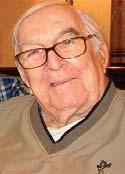
Hinton was the director of the Auburn University Marching Band from 1956 to 1969 and head of the Department of Music from 1969 to 1984.
"The Auburn Bands are saddened to hear of the passing of Dr. Wilbur "Bodie" Hinton," said Rick Good, current director of bands for Auburn University.
Hinton served as President of the Alabama Music Educators Association from 1960-1962 and was inducted into the Alabama Music Educators Association Hall of Fame in 2008.
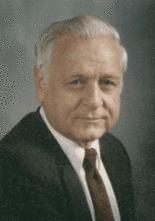
Good said Hinton was responsible for the Auburn band ditching their gray cadet-style uniforms in favor of orange and blue "Yale-style" uniforms.
The marching band’s outdoor practice field was named after Hinton in 1986.
"He insisted that Auburn men and women demonstrate class in all areas of life," Good said. “ That spirit still lives on today in the annual Bodie Hinton award, voted on by the members of the marching band and presented to the senior who best demonstrates the spirit and excellence that is The Auburn University Marching Band.”
1948Walter A. Mason
1950Vernon Skoog
1952John J. Hoover
1954Lamar Triplett
1956Carleton K. Butler
1958Mort Glosser
1960Wilbur Hinton
1962Lacey Powell, Jr.
1964G. Truman Welch
1966Jerry Countryman
1968Floyd C. McClure
1970Jerry Bobo
1972Frances P. Moss
1974George Hammett
1975Frances P. Moss
1976S. J. Allen
1978W. Frank McArthur, Jr.
1980Paul Hall
1982Lacey Powell, Jr.
1984Johnny Jacobs
1986Merilyn Jones
1988Ronald D. Hooten
1990Ken Williams
1992Dianne Johnson
1994James K. Simpson
1996Johnnie Vinson
1998Michael Meeks
2000John McAphee, Jr.
2002Tony Pike
2004Becky Rodgers
2006John Baker
2008Pat Stegall
2010Steve McLendon
2012Sara Womack
2014 Carl Hancock
2016Susan Smith
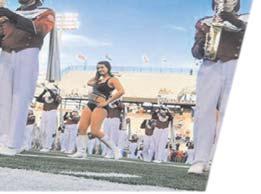
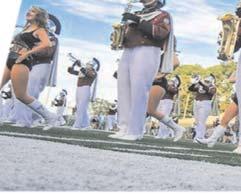
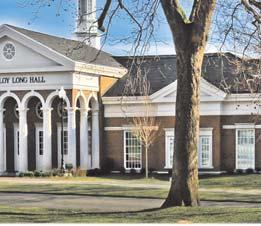
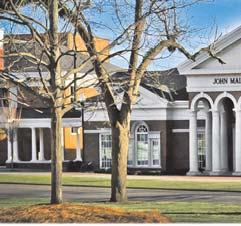
Southeastern United States Concert Band Clinic – Middle School
Southeastern United States Choral Clinic –High School



Southeastern United States Concert Band Clinic – High School
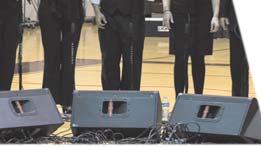


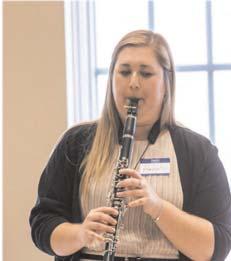

Guitar Festival
February 17, 2017
Vocal Jazz Invitational
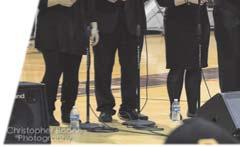

Clarinet Day

Bachelor of Arts in General Music






































Bachelor of Science in Music Industry
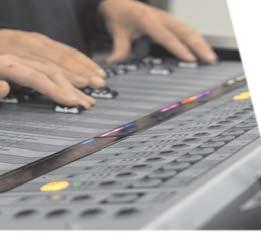



Bachelor of Music Education – Instrumental
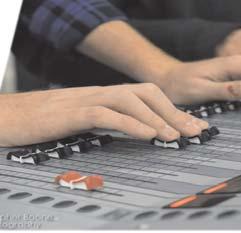

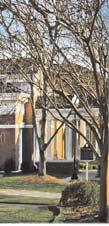
Bachelor of Music Education – Vocal/Choral Music Minor
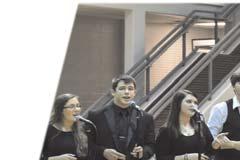
Music Industry Minor
Performing Arts Minor
For more information and calendar of events please visit: Music.troy.edu

 Review by Dr. Jennifer Tinberg
Review by Dr. Jennifer Tinberg
The many elements involved in playing the clarinet can be challenging to both beginning and advanced clarinetists. For educators that do not specialize in clarinet, the multitude of possible problems in a clarinet section can be frustrating. Dr. Phillip O. Paglialonga’s book, Squeak Big: Practical Fundamentals for the Successful Clarinetist¸ addresses all aspects of clarinet playing in both practice and teaching.
Squeak Big is presented in four sections: Pedagogy, Effective Practicing, Daily Elements, and Additional Resources. Of these sections, Pedagogy is the largest, encompassing the full spectrum of clarinet fundamentals. It includes basics, such as breathing and embouchure, as well as more advanced ideas, such as tone development and legato finger motion. In these chapters, Paglialonga describes each concept, includes visual examples, and provides both conceptual and practical exercises. Concepts such as posture, tone development, and relaxation are given equal weight to more traditional method book exercises, which most often highlight finger technique and articulation.
Paglialonga’s descriptions and examples of concepts are some of the most attractive parts of his method book. The addition of conceptual exercises is very useful for educators working with beginning students, since they allow students to see or feel the concept in a basic form before applying it to their clarinet playing. Concepts such as tonguing are often simple to explain, but very challenging in practice. The inclusion of exercises that allow students to see and experiment with reed vibration and pressure is a huge benefit when teaching something that we cannot accurately monitor visually. By linking these simple demonstrations to more standard tonguing etudes, educators are provided with excellent teaching strategies for all levels of clarinet students.
The section on embouchure would be of particular interest to non-clarinetist music educators. Besides excellent descriptions of forming and maintaining a good embouchure, this section also includes a chart of common issues heard in clarinet playing, with the corresponding embouchure problem and methods to correct the issue. Unlike many other clarinet methods, Squeak Big encourages students and music teachers to be aware of the great variety of clarinet tones found when listening to professional performers. This fosters ideas of musicality and expression, while providing strong fundamentals in basic techniques. A discussion of practice techniques and a proposed scale routine are additional resources that round out Paglialonga’s comprehensive guide to clarinet playing.
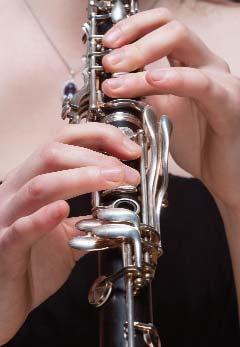
Squeak Big is a unique resource that is accessible to all levels of clarinet playing. The clear descriptions, visual examples, and complete scope of topics makes it a fantastic book for both advanced clarinetists and music educators. Squeak Big is published by Imagine Music Publishing, and can be purchased at www.squeakbig.com.
Paglialonga, Phillip O., Squeak Big: Practical Fundamentals for the Successful Clarinetist. Medina, NY: Imagine Music Publishing, 2015.
AMEA would like to express appreciation to the following partners who have joined AMEA in our efforts to promote music education in Alabama. Please support these industry/institutional members who support you as music educators!
Arts Music Shop Inc., 3030 E. Blvd., Montgomery, AL 36116
Custom Fundraising Solutions, 225 Distribution Drive, Homewood, AL 35209
Faulkner University Department of Music, 5345 Atlanta Hwy, Montgomery, AL 36109
Gadsden Music Company Inc., 607 Broad Street, Gadsden, AL 35902
Group Travel Network, Inc., 7485 Conroy Windermere Rd. Suite D, Orlando, FL 32835
John M. Long School of Music, School of Music, Troy, AL 36082
JW Pepper, 9053 Riverside Pkwy, Lithia Springs, GA 30122
Landmark Tour and Travel, 704 37th Street South, Birmingham, AL 35222
Marchmaster Inc., P.O. Box 73379, Newnan, GA 30271
OrlandoFest, 7081 Grand National Drive, Suite 111, Orlando, FL 32819
QuaverMusic.com, 1706 Grand Ave., Nashville, TN 37212
Samford University, 800 Lakeshore Drive, Birmingham, AL 35216
Southeastern Performance Apparel, 142 S. Woodburn Drive, Dothan, AL 36305
Sunburst Indian River Citrus, 4960 Meadowbrook Rd., Birmingham, AL 35242
Superior Travel and Tour, 1270 Coronado Terrace, Deltona, ,FL 32725
Thomas Tours, Inc., 2405 12th Ave. South, Nashville, TN 37204
University of Alabama Bands, 211 Moody Music Building, Tuscaloosa, AL 35487
University of North Alabama Dept. of Music, UNA Box 5040, Florence, AL 35632
University of South Alabama, LPAC 1072, 5751 USA Drive South, Mobile, AL 36688

MARCHING
APRIL 21-22, 2017
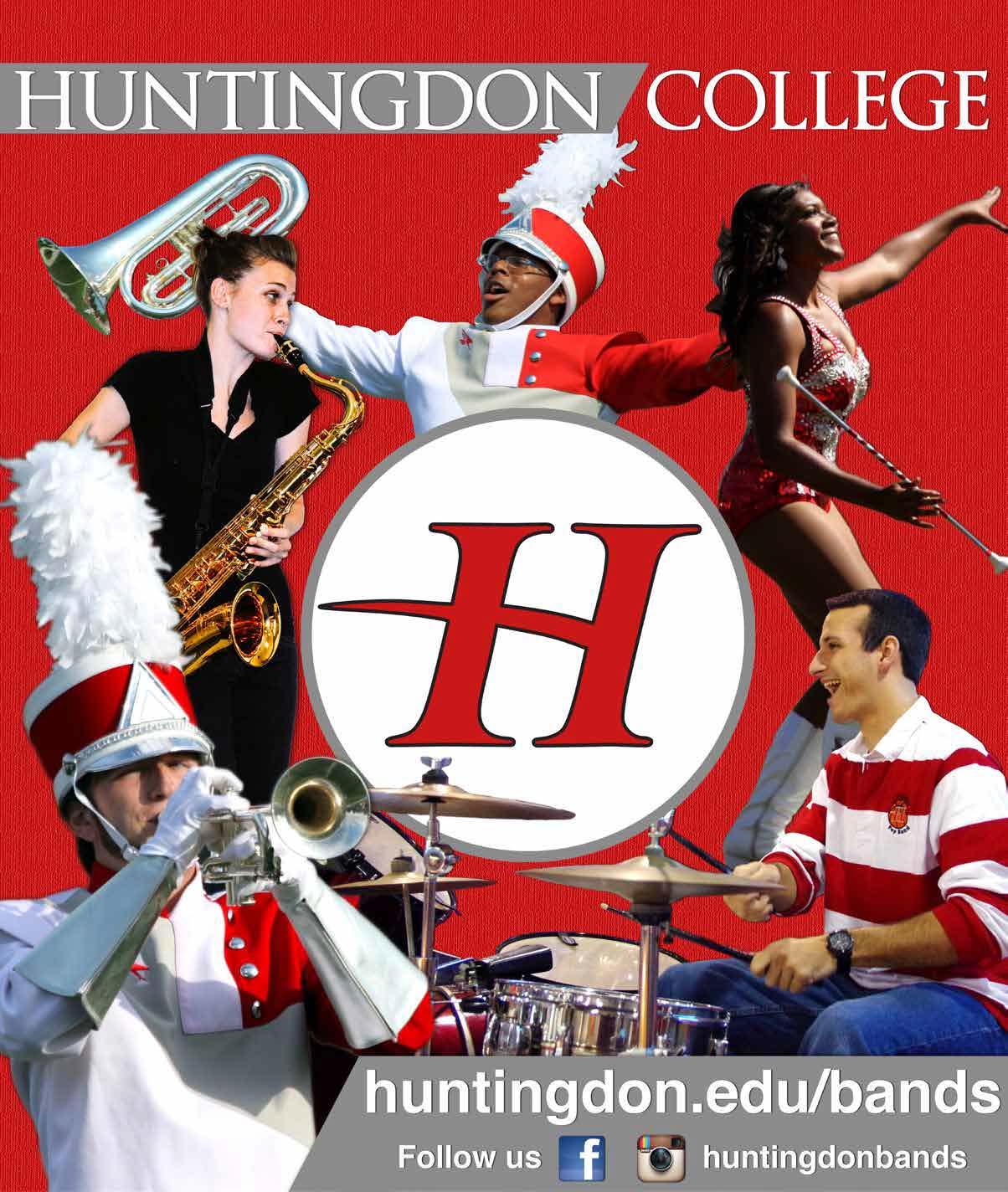

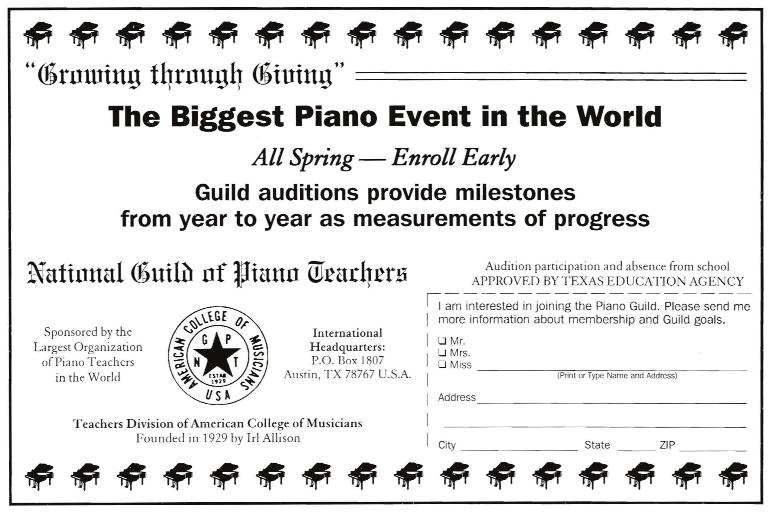
Conference Dates: January 19-21, 2017
The Alabama Music Educators Association, Higher Education Division invites research poster submissions from all levels of music scholars and practitioners. Submissions may include completed and in-progress research studies involving any aspect of music (education, therapy, history, psychology, performance, music in higher education, alternative music, etc.). Research based on issues facing music educators, musicians, and music students in the Southeastern United States are especially welcome, though this is not a requirement.
All submissions should meet the Code of Ethics found in the Journal of Research in Music Education.

Research presented at other conferences will be considered. However, previously published work will not be accepted.
SUBMIT YOUR PROSOSAL: http://amea-research.org

Conference Days and Location
The 2017 AMEA conference will be Thursday, January 19, 2017 – Saturday, January 21, 2017 at the Renaissance Montgomery Hotel and Convention Center in Montgomery, Alabama. See http://www.myamea.org for more information.
Poster Session Day and Time
The poster session will be held Friday afternoon of the conference from 1:15 - 3:15 p.m.
Proposal Submission
Interested researchers should submit a detailed abstract of the research project (up to 1000 words) as a Word or PDF document through our online submission website: http://amea-research.org
Deadline
Submissions must be received by 11:59 p.m. CST on Monday, November 7, 2016 for full consideration.
Process for Review & Notification
All abstracts will be peer-revised and authors will be notified of acceptance by email by Monday, December 5, 2016. If accepted, authors must register and attend the AMEA Conference to present the poster. In the case of multiple-author works, at least one author must register and attend the AMEA Conference to present the poster.
Poster Dimensions
Posters should be professional in appearance and have poster dimensions of dimensions no larger than 36 inches by 48 inches. Presenters are expected to bring 15-20 copies of their research abstract to the session.

More Information
Contact Dr. Jane Kuehne at Auburn University by phone at (334) 844-6852 or by email at kuehnjm@auburn.edu.
Fall Workshop Board Meeting
Fall Workshop
ASSC Auditions
AllState Auditions
Thursday, September 8th
Friday, September 9th
Friday, September 30thSaturday, October 1st
Wednesday, November 2ndThursday, November 10th
Wednesday, November 2nd
First United Methodist Church, Montgomery
First United Methodist Church, Montgomery
Gardendale Mt. Vernon Methodist, Gardendale
Various. See below.
Mobile
Thursday, November 3rdFriday, November 4th Montgomery
Saturday, November 5th
Sunday, November 6th
Monday, November 7th Tuesday, November 8th
Wednesday, November 9thThursday, November 10th
Gadsden
Florence
Cullman
Tuscaloosa
AMEA Board Meeting
AMEA
OCS/OA/ME
District I
District II
District III
District IV
District V
District VI
District VII
Wednesday, January 18th
Thursday, January 19thSaturday, January 21st
Thursday, November 17th
Monday, December 5th
Tuesday, November 29th
Tuesday, November 15th
Thursday, November 17th
Wednesday, October 26th
Tuesday, November 15th
Renaissance Hotel, Montgomery
Renaissance Hotel, Montgomery
Decatur High School, Decatur
Calera Middle School, Montevallo
Cahaba Heights United Methodist Church, Birmingham
Alexandria high School, Alexandria
Bob Jones High School, Huntsville
Tallassee High School, Tallassee
University of Mobile, Mobile
SCPA
District I
District I
District II
District III
District IV
District V
District VI
Tuesday, March 21st
Wednesday, March 22nd
Thursday, March 23rdFriday, March 24th
Monday, March 20thWednesday, March 22nd
Friday, April 7th
Monday, April 3rdTuesday, April 4th
Thursday, March 16th
District VII Thursday, March 16th
Solo & Ensemble
District I Thursday, April 6th
District II
District III
District IV
District V
Thursday, March 23rdFriday, March 24th
Friday, February 24th
First Baptist Church, Decatur
University of North Alabama, Florence
University of Alabama, Tuscaloosa
Gardendale Mt. Vernon Methodist, Gardendale
Gadsden City High School, Gadsden
Columbia High School, Huntsville
First Baptist Church, Tallassee
Springhill Baptist Church, Mobile
University of North Alabama, Florence
University of Alabama, Tuscaloosa
Cahaba Heights United Methodist Church, Birmingham
Thursday, February 23rd Jacksonville State University, Jacksonville
Monday, February 13thTuesday, February 14th TBA
District VI Thursday, March 16th
District VII (Fall) Thursday, October 20th
District VII (Spring) Thursday, March 16th
First Baptist Church, Tallassee
University of Mobile, Mobile
Springhill Baptist Church, Mobile
October 21, 2016 Elementary Music Festival
Samford University
October 22, 2016 AMEA/AOSA Teacher Workshop TBA (Birmingham Area Elementary School)
January 1921, 2017 AMEA Professional Development Conference Renaissance Montgomery Hotel and Convention Center
August 8, 2016Audition Excerpts Posted
September 27, 2016Audition Registration Deadline
September 30 October 11, 2016District Auditions
November 16, 2016Results Posted
December 1, 2016Festival Registration Deadline
December 2, 2016Begin Notifying Alternates
December 15, 2016Music Mailed
January 1921, 2017AMEA Conference
February 912, 2017AllState Festival
October 9, 2016 Collegiate Summit Tuscaloosa
January 1921, 2017 AMEA Professional Development Conference Renaissance Montgomery Hotel and Convention Center
The Alabama Department of Education has set Fall 2018 as the target date for implementing edTPA as a new requirement for statewide teacher performance assessment that will be linked to initial teacher certification.
According to the edTPA website (http://edtpa.aacte.org/):
edTPA® (Teacher Performance Assessment) is a performancebased, subjectspecific assessment and support system used by more than 600 teacher preparation programs in some 40 states to emphasize, measure, and support the skills and knowledge that all teachers need from Day One in the classroom.
Developed by educators for educators, edTPA is the first such standardsbased assessment to become nationally available in the United States. It builds on decades of work on assessments of teacher performance and research regarding teaching skills that improve student learning.
It is transforming the preparation and certification of new teachers by complementing subjectarea assessments with a rigorous process that requires teacher candidates to demonstrate that they have the classroom skills necessary to ensure students are learning.
edTPA is comprised of three main tasks designed to represent an effective teaching cycle. Planning Task 1 documents “intended teaching,” Instruction Task 2 documents “enacted teaching,” and Assessment Task 3 documents “how teaching impacts student learning” (edTPA, 2015, p. 2). Figure 1 provides a visual overview of the edTPA process.
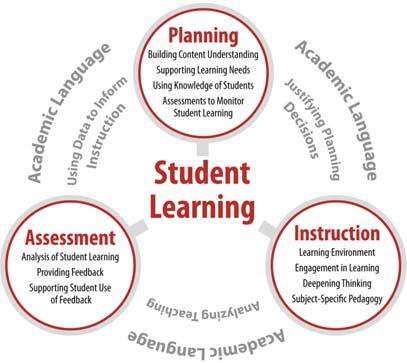
Performancebased teacher assessment is a laudable goal, but both university students and educators have raised serious questions about the edTPA process. There are concerns about the $300 basic student cost of edTPA on top of other fees already associated with teacher certification as well as ethical questions about the potentially profitdriven motives for Pearson (edTPA publisher). Another important concern is whether the edTPA process is equally valid across all teachereducation settings. Does this process sometimes force a “teaching to the test” mentality?
EdTPA invades this [teacher education] experience. Students tend to focus on meeting the requirements at the expense of realizing when they are making valuebased ideological choices. As long as they follow the rubrics, which operate in the land of “valuefree” language, they can score well. The edTPA’s detailed instructions and rubrics communicate that teaching requires following rules and can be reduced to a number. Because edTPA is highstakes, students lock in on it. Class time is taken over by anxious questions about evidence and scoring. What will be left out? (Madeloni & Gorlewski, 2013, par. 10)
Contexts such as large music classes emphasizing active student participation in music making may be particularly problematic. As interns face the challenges of teaching responsibilities in a K12 music classroom, maintaining the integrity of Instrumental, Choral, and General Music student performance and literacy objectives as outlined in the new 2014 Music Standards (NAfME, 2014) while also completing edTPA requirements (including recording an intensive teaching video and writing detailed narrative responses to prompts for reflective writing about planning commentary, instruction commentary, and assessment commentary) may seem overwhelming.
The Alabama Department of Education set Fall 2018 as the target date for implementing edTPA as a new requirement for statewide teacher performance assessment and initial teacher certification. This new requirement will affect all stakeholders in the Music Education Student Teaching/Internship process including university students majoring in music education, K12 cooperating teachers who supervise student teachers in their music classrooms, and university faculty who supervise student teachers. Currently, twentysix teacher education institutions across the state are participating in the implementation process with many pilot programs underway in teacher education programs throughout Alabama. Auburn University was one of several EducatorPreparation Programs receiving Alabama Department of Education grant funding to pilot edTPA. We have had six music education students volunteer to participate in our edTPA pilot program (two in Fall 2015, four in Spring 2016), and
anticipate at least two more will participate in Fall 2016. This article describes what Auburn Music Education faculty are learning during this edTPA pilot process and how we are using that knowledge to integrate edTPA throughout our undergraduate music education curriculum in ways that are (a) meaningful to our music education students, (b) will prepare them to complete the edTPA process successfully, and, most importantly, (c) will be valid in terms of broader goals for our music education program. We decided to use Comprehensive Musicianship through Performance (CMP) as a logical framework for integrating edTPA into our music methods courses. CMP involves Teaching “students to perform with a historical and theoretical understanding of the music and the creative process” (O’Toole, 2003, p. xi). Figure 2 shows the five basic principles of CMP in more detail.
We begin with the music selection process (CMP), which overlaps with outcomes (CMP) and edTPA Planning Task 1. Our hope is that starting with the music will keep the process more authentic. Once the music is selected, the students engage in a detailed score analysis as a graded project, working from a score analysis worksheet with detailed directions covering the following topics:
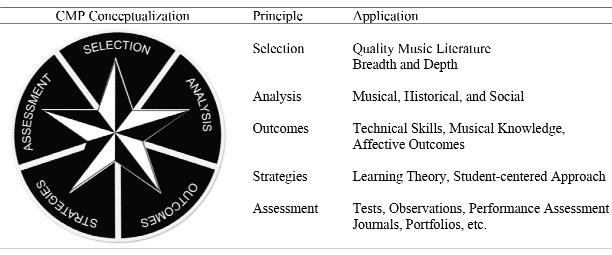
=Marking Your Score
=Melodic Considerations
=Harmonic Considerations
=Rhythmic/Time Considerations
=Additional Part Examinations
=Percussion Requirements – Instrumental Works (or Choral Works with Percussion)
=Specific Instrument/Voice Considerations
=Text Considerations – Choral
=Texture
=Dynamics/Interpretation
=Accompaniment Considerations – Choral
=Complete the Score Analysis and Planning Chart as the basis for developing your Rehearsal Plan. (In Canvas Files.)
=Rehearsal Plans for Each Day – (Use the Lesson Plan Format in Canvas Files.)
=Reflection – Use the Written Reflection Guidelines (in Canvas Files) to complete a detailed reflection on this rehearsal/ lesson and what you plan to do for the next lesson.
http://www.wmea.com/CMP/
The next step is using a Score Analysis and Planning Chart, as shown in Figure 3, to help our students begin to

think about how their score analysis transfers to their lesson planning in very specific ways, including instructional strategies and student outcomes (CMP) as well as academic language (edTPA). The students’ third step is to transfer their score analysis to a detailed lesson plan format which prompts them to develop their teaching strategies, student outcomes, and specific assessment procedures (CMP) corresponding with the edTPA Planning Task. Students have opportunities to “enact” their music lesson plans during field teaching assignments in the public schools. They reflect upon how the interrelated CMP processes of Selection, Analysis, Outcomes, Strategies, and Assessment function in a PK12 music class. This activity also corresponds with edTPA Instruction Task 2. In addition, they consider assessment data and develop specific strategies for more effective teaching. This step draws upon all five of the CMP Principles, corresponds with edTPA Assessment Task 3, and also cycles back to Planning Task 1 as our students reflect upon planning future music lessons.

Retooling our undergraduate curriculum is still a workinprogress for our Music Education faculty. We developed a Curriculum Map, shown in Figure 4, to help us understand and adjust how each course in our undergraduate sequence contributes to the learning process and to help us be more consistent with our use of academic language. We are reworking our Music Education methods courses based upon this theoretical foundation in hopes that our Fall 2018 seniors (and all of our subsequent graduates) will be well prepared to approach their internship (student teaching) with skill and confidence, and successfully complete the edTPA tasks while upholding a bestpractices approach to teaching musical skills and knowledge.
We welcome suggestions from our colleagues in Alabama and other states. Our aim is for students to be comfortable with edTPA’s language and tasks so that they will be able to focus on the joys and challenges of teaching music, rather than worrying about passing edTPA. Ultimately, we are striving to ensure that the edTPA process will enhance their learning experience rather than distract from it!
References
edTPA (2015). K12 performing arts assessment handbook. Stanford, California: Stanford Center for Assessment, Learning, & Equity.
Madeloni, B., & Gorlewski, V. (Summer, 2013). Wrong answer to the wrong question: Why we need critical teacher education, not standardization. Rethinking Schools, 27 (4). Retrieved from http://www.rethinkingschools.org/archive/27_04/27_04_ madelonigorlewski.shtml
NAfME (2014). 2014 music standards. Retrieved from http://www.nafme.org/myclassroom/standards/coremusicstandards/
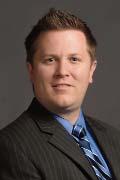

O’Toole, P. (2003). Shaping sound musicians: An innovative approach to teaching comprehensive musicianship through performance. Chicago: GIA Publications
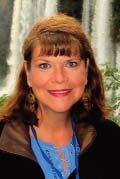














































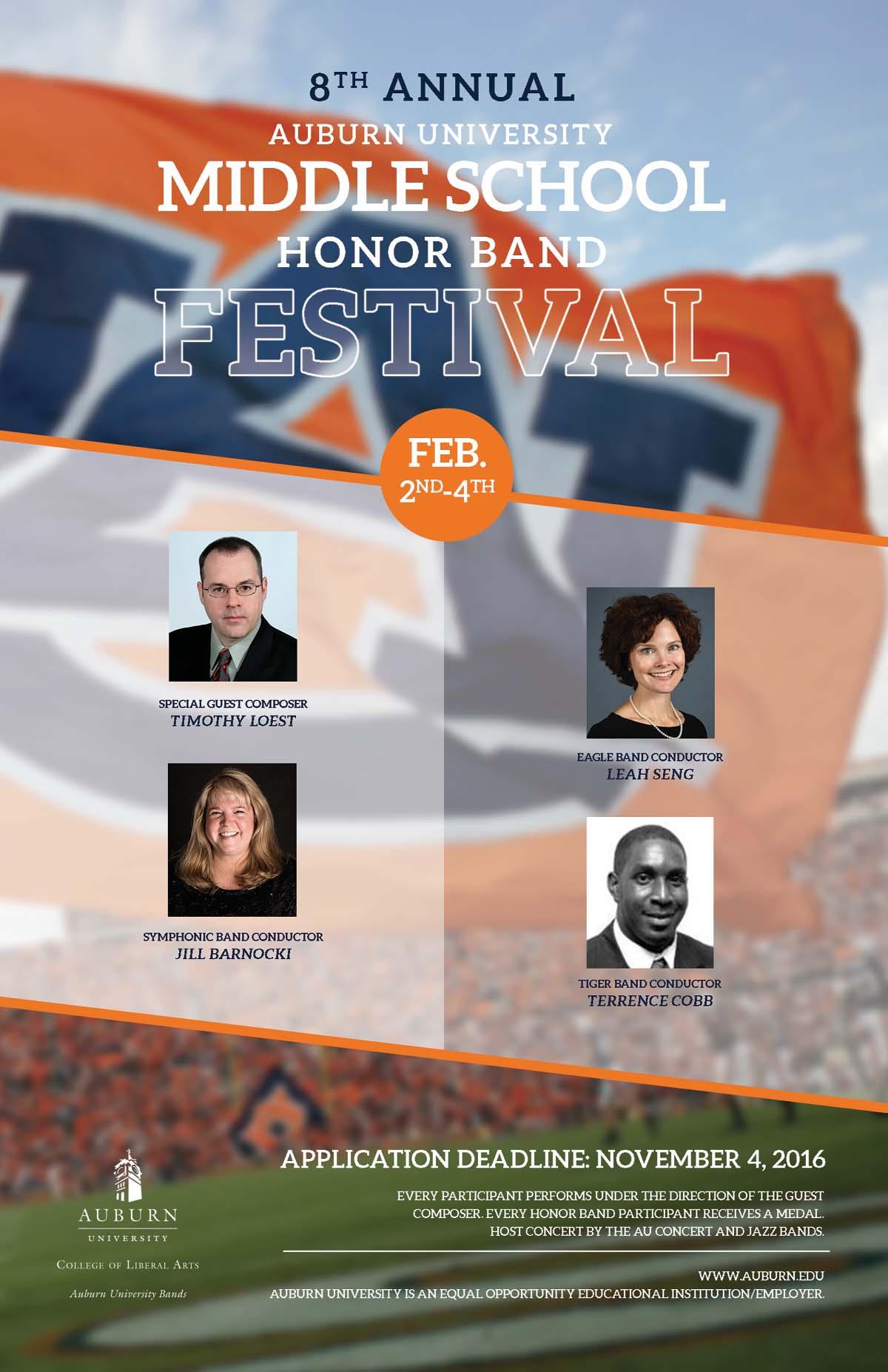
and music and worship. graduate and graduate degr niversity offers under





ees in music, music education, degrees





